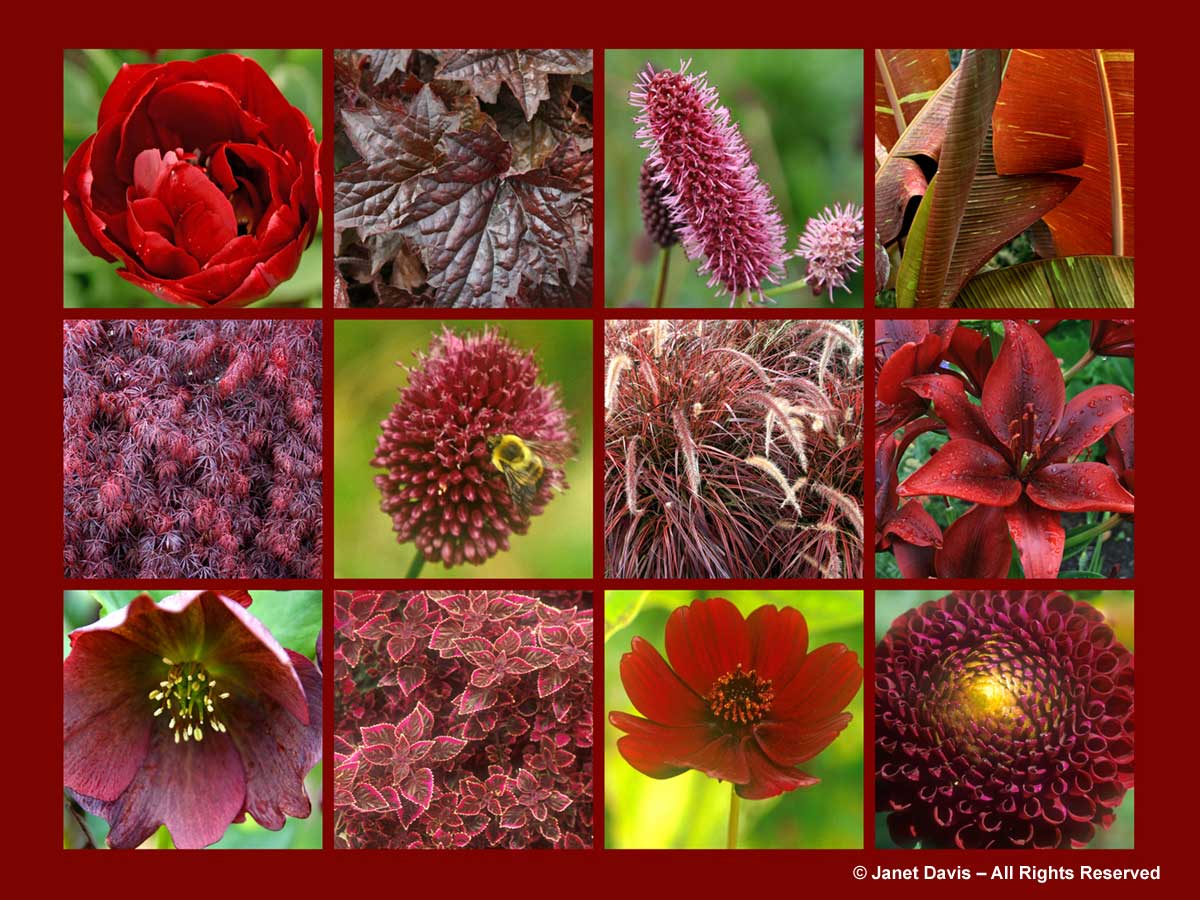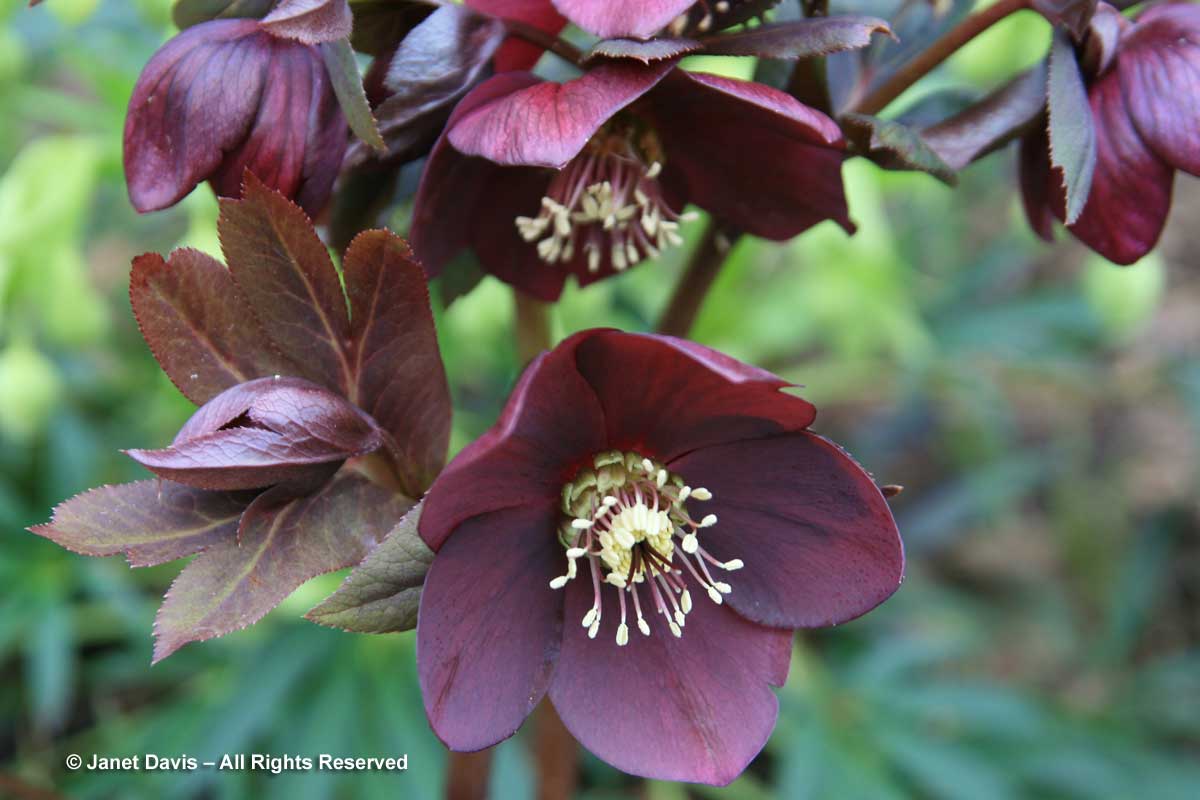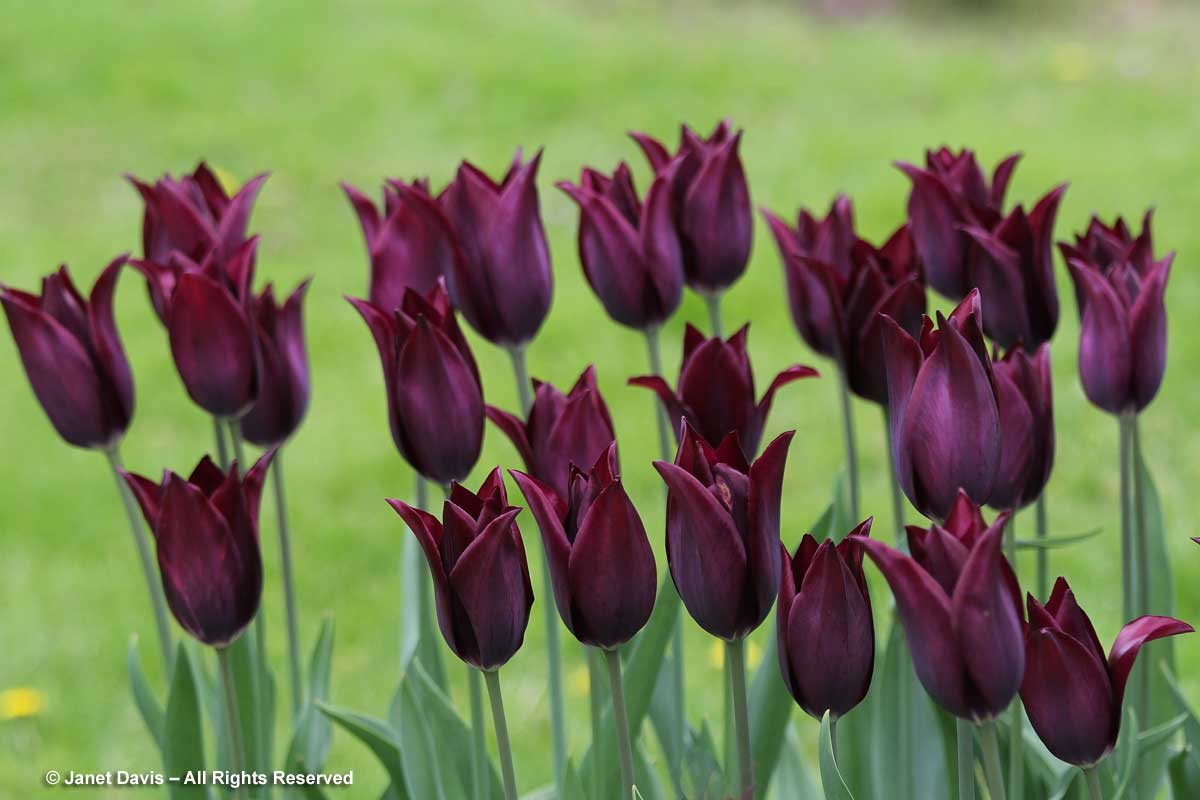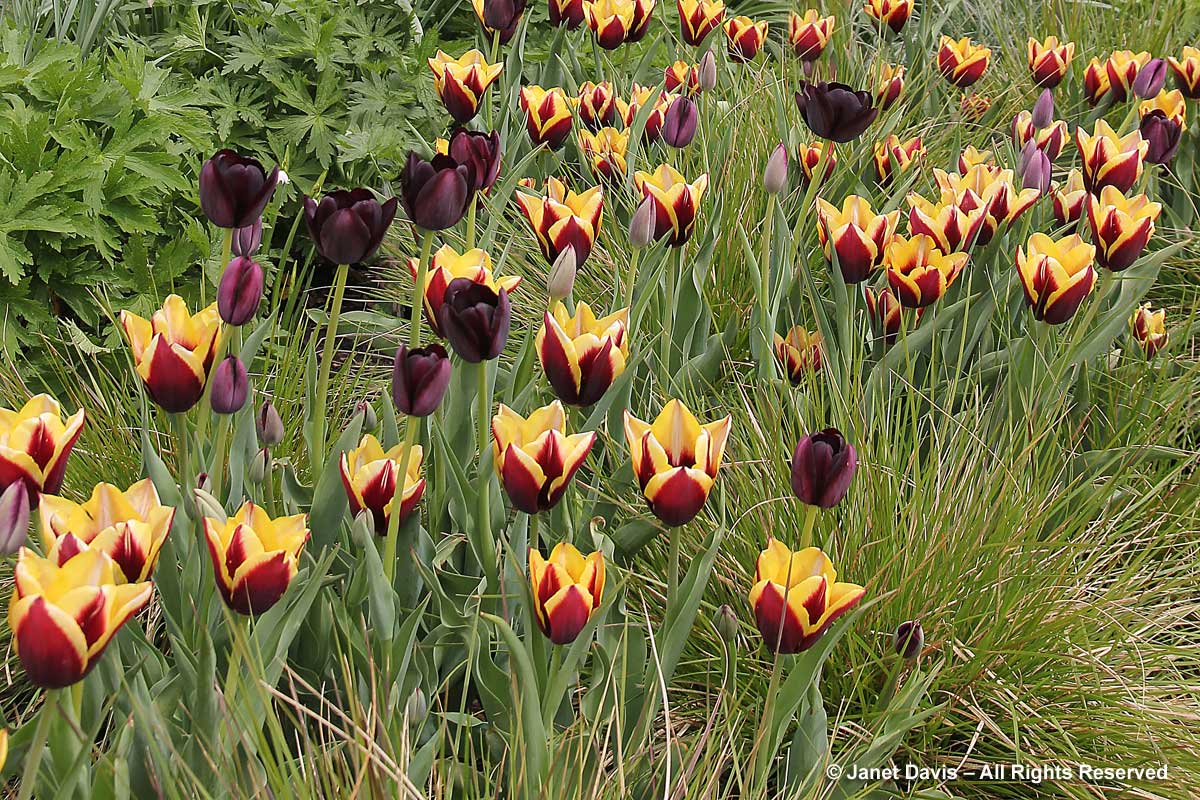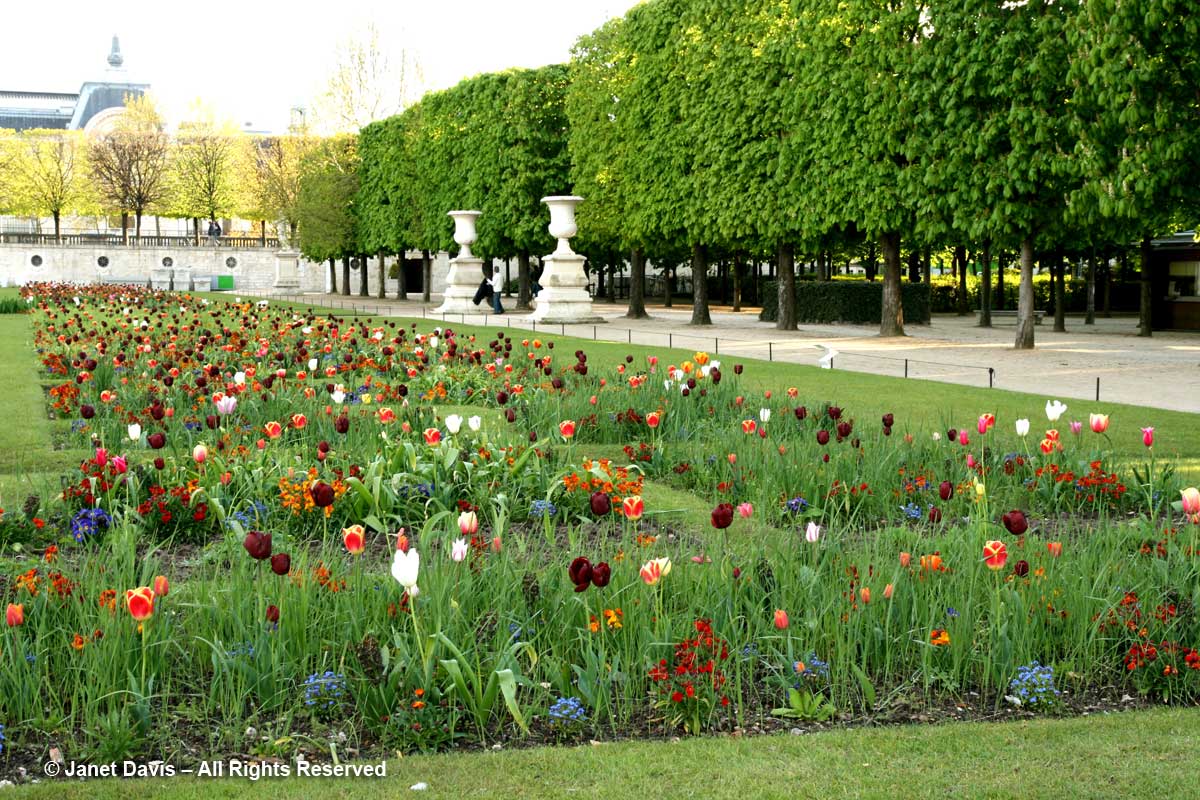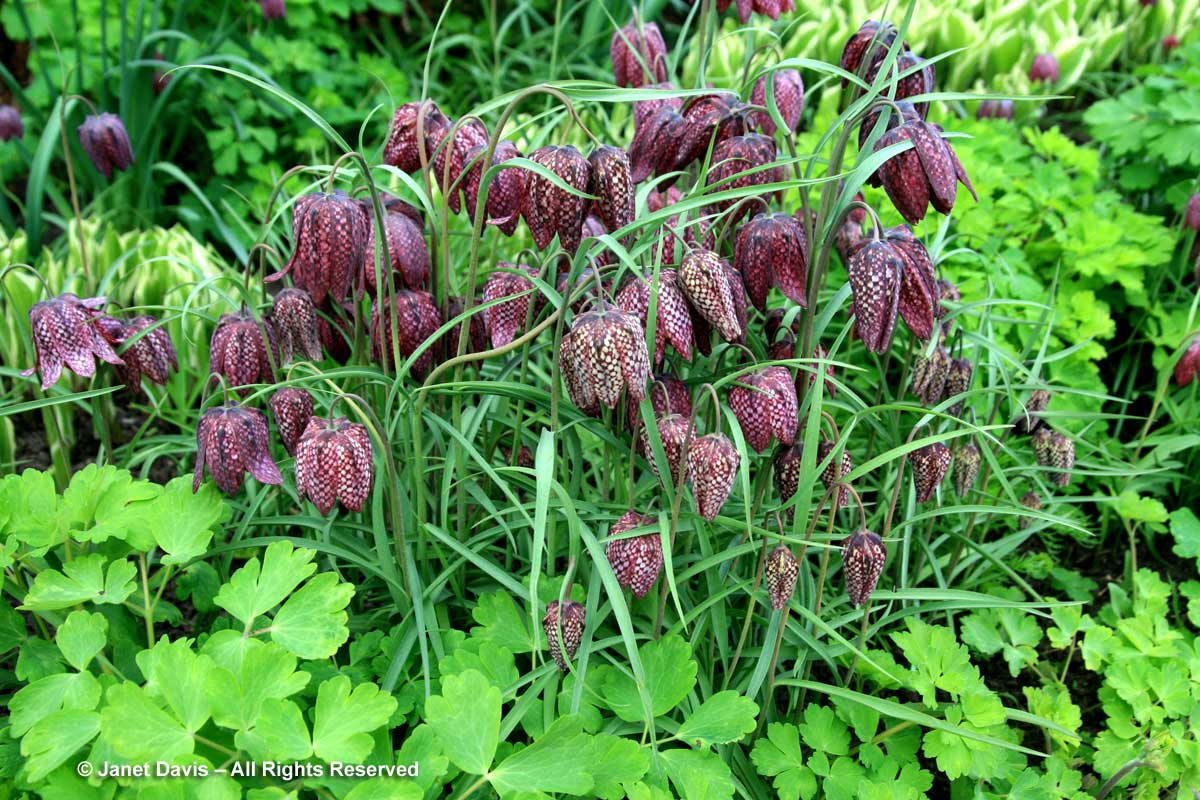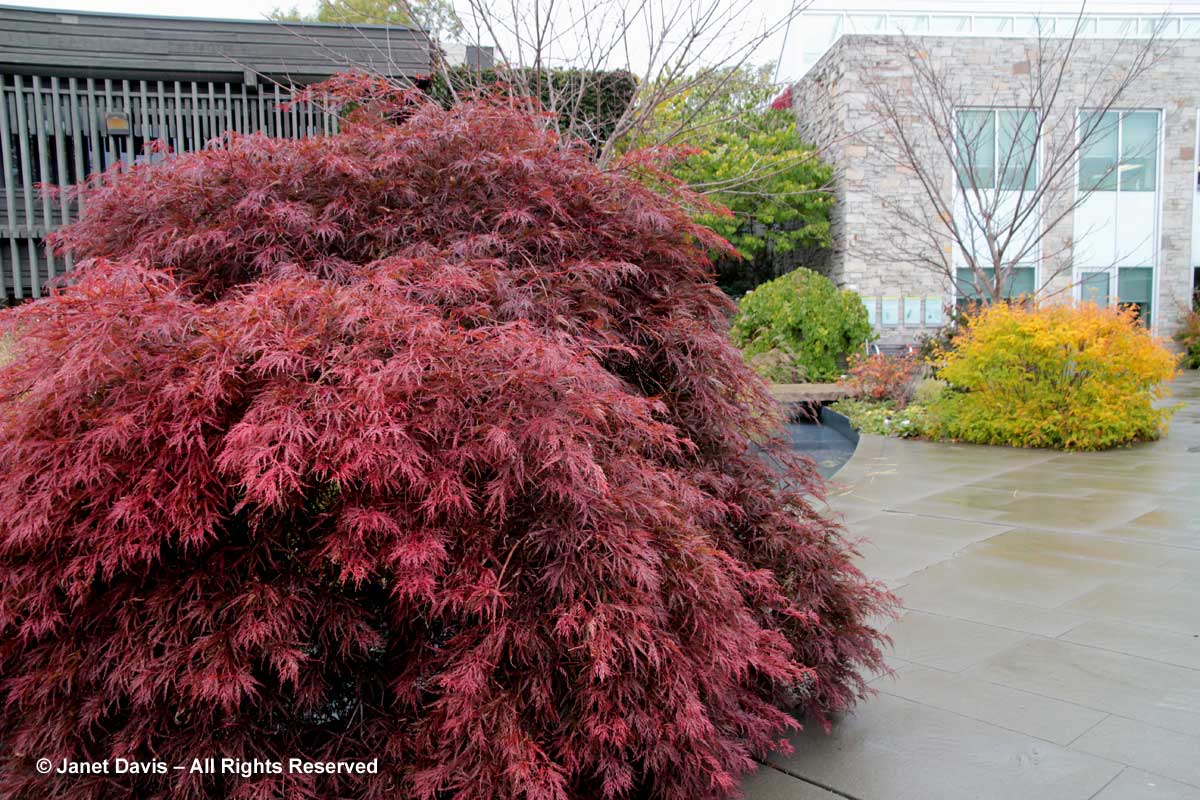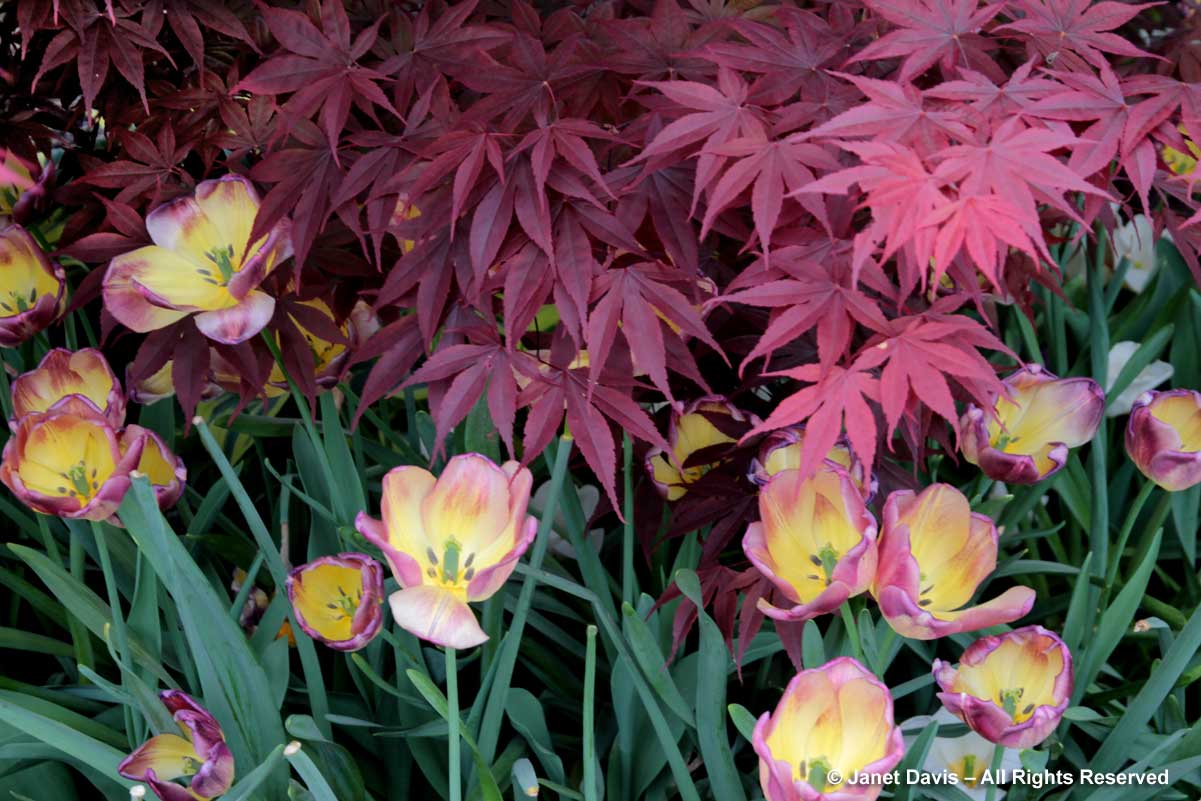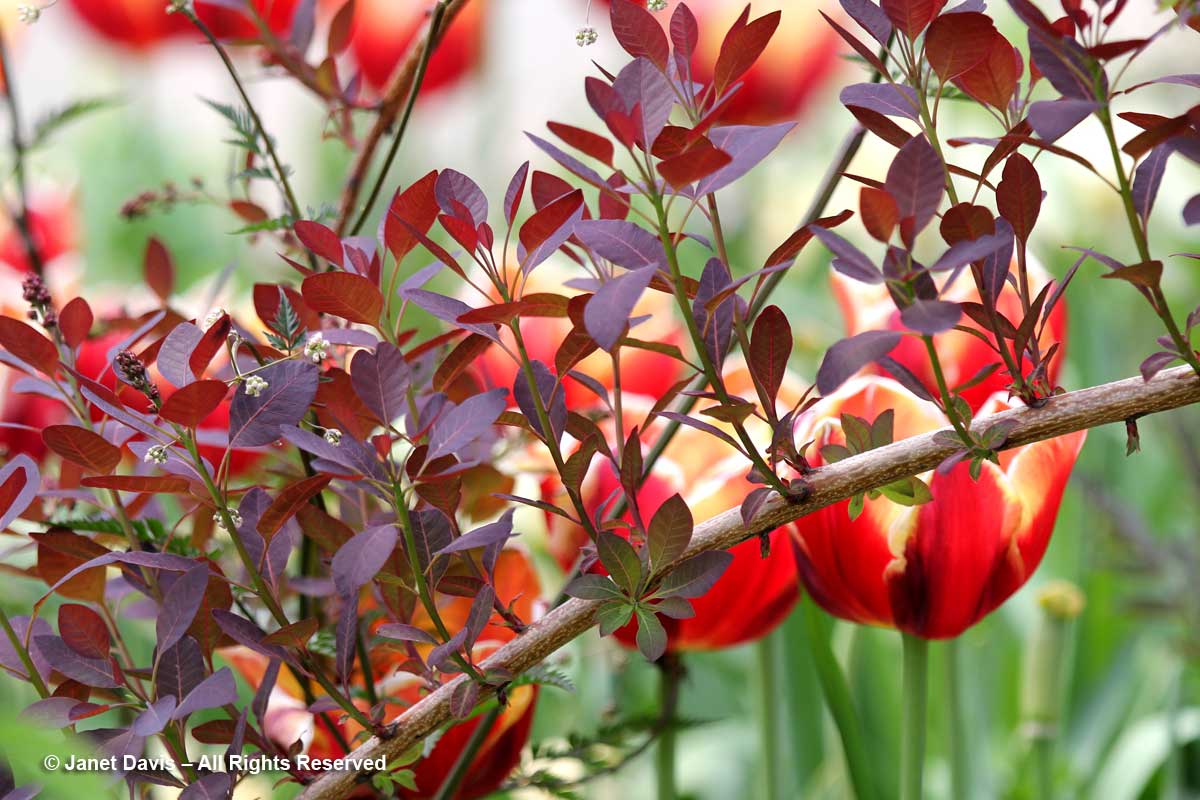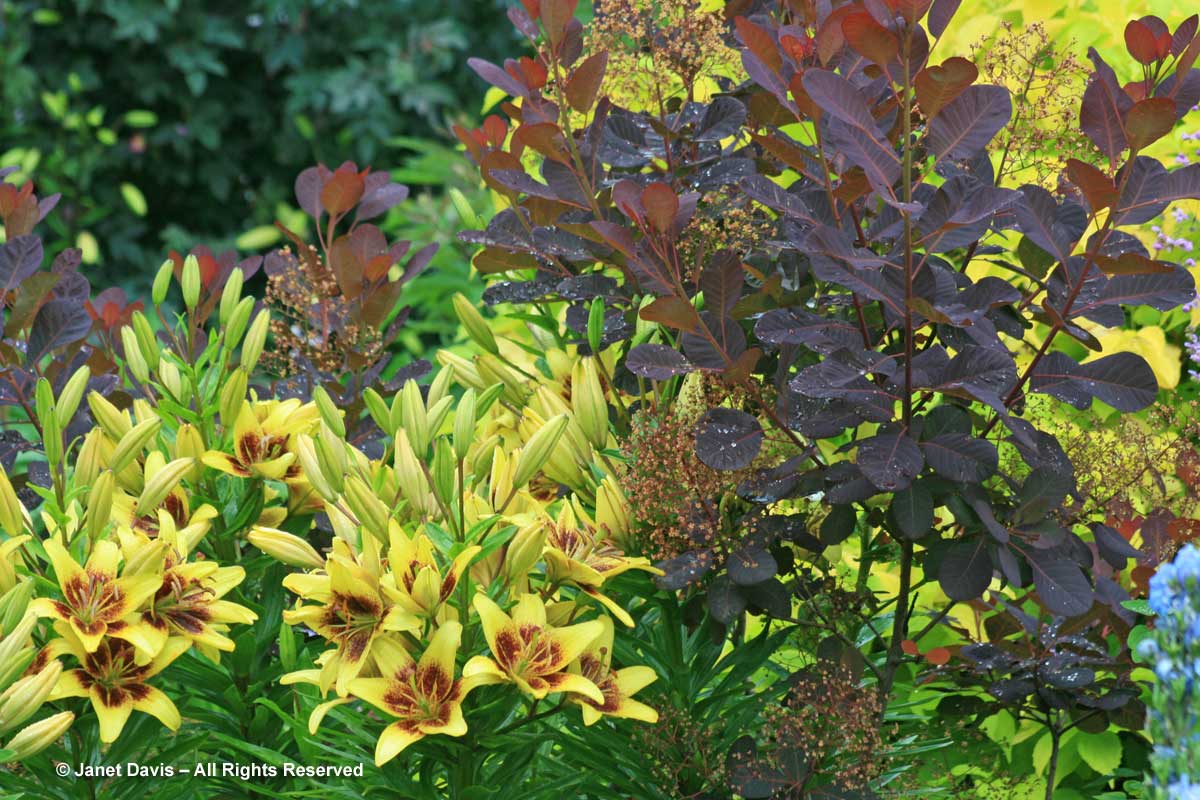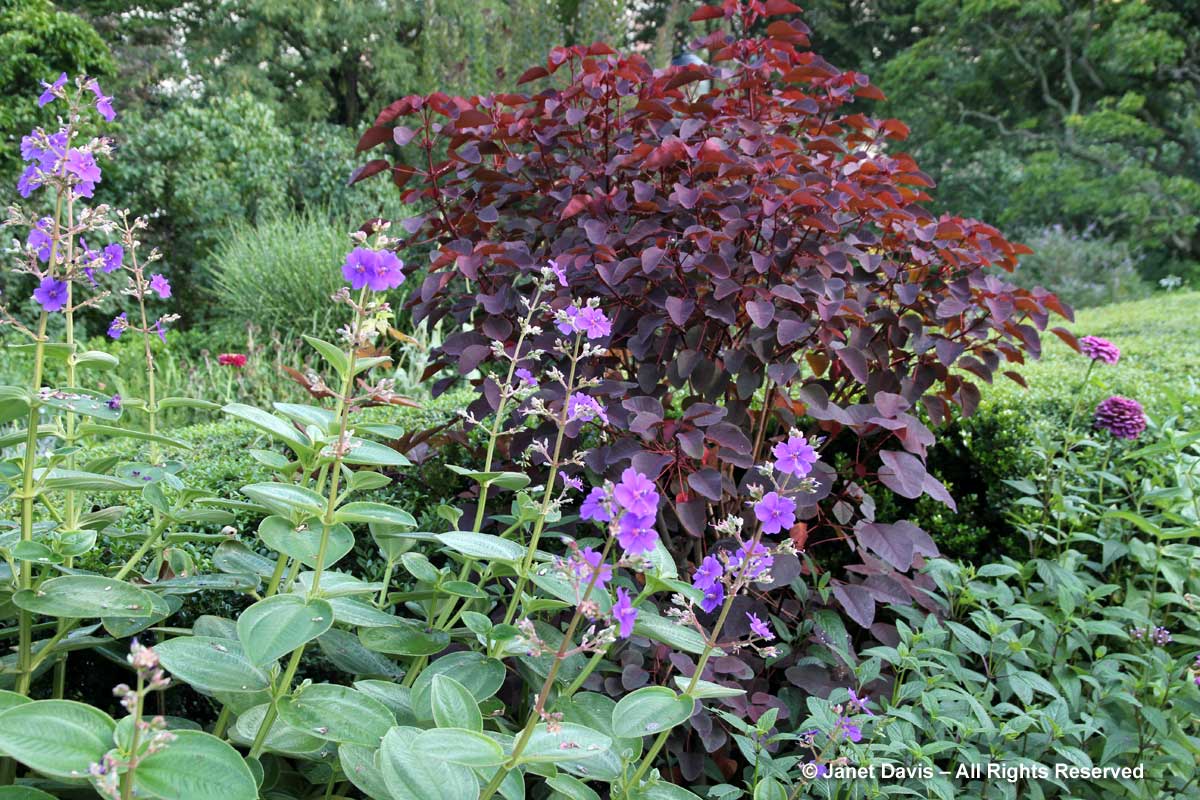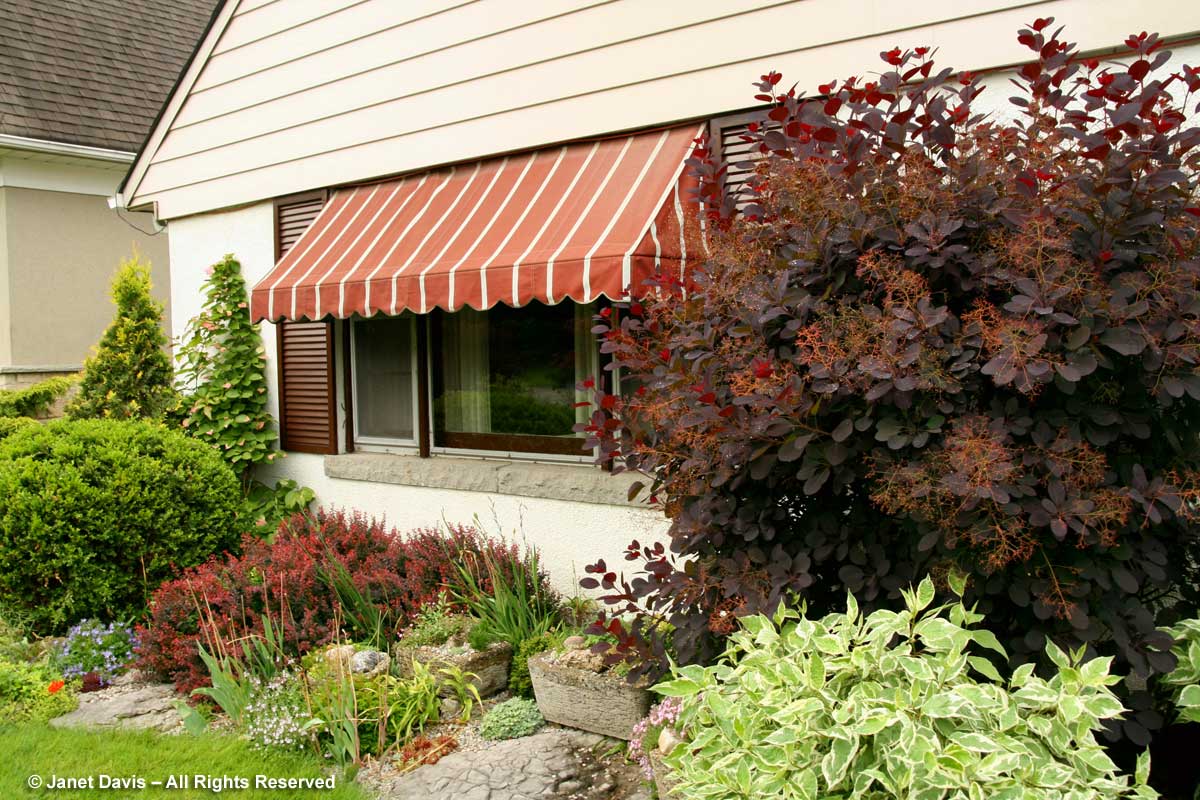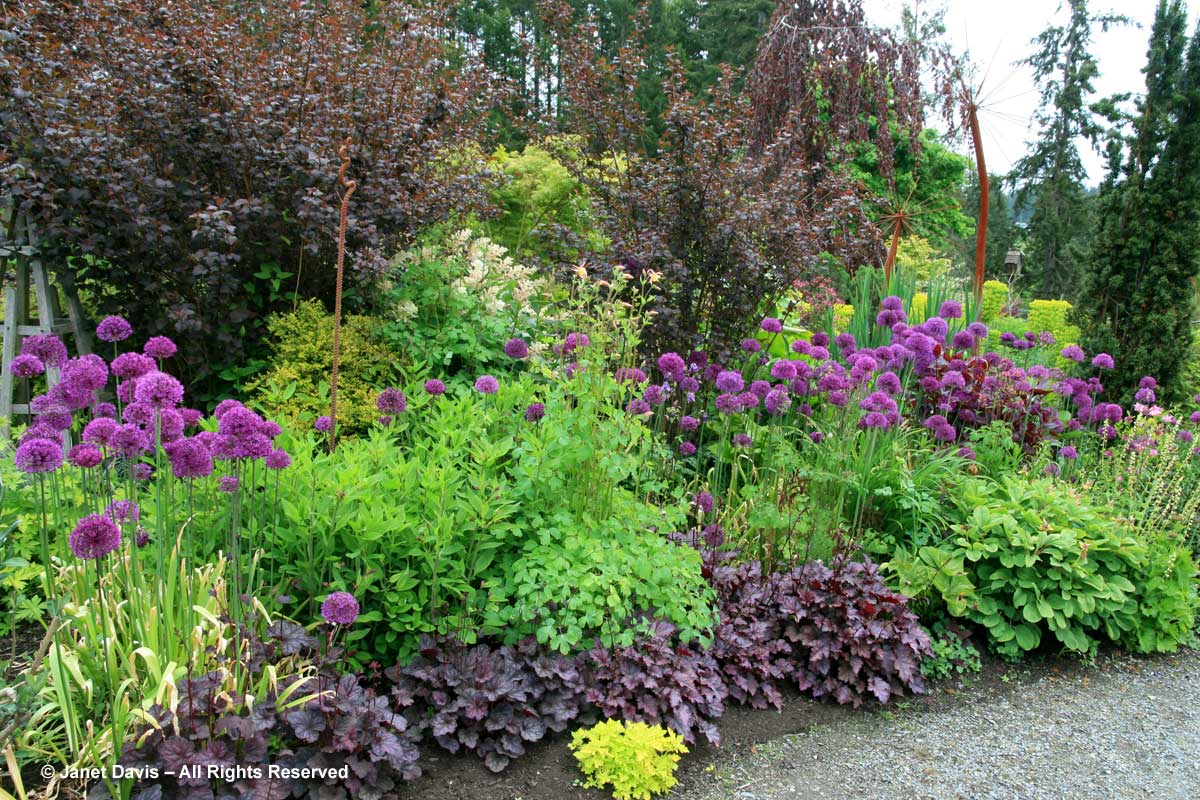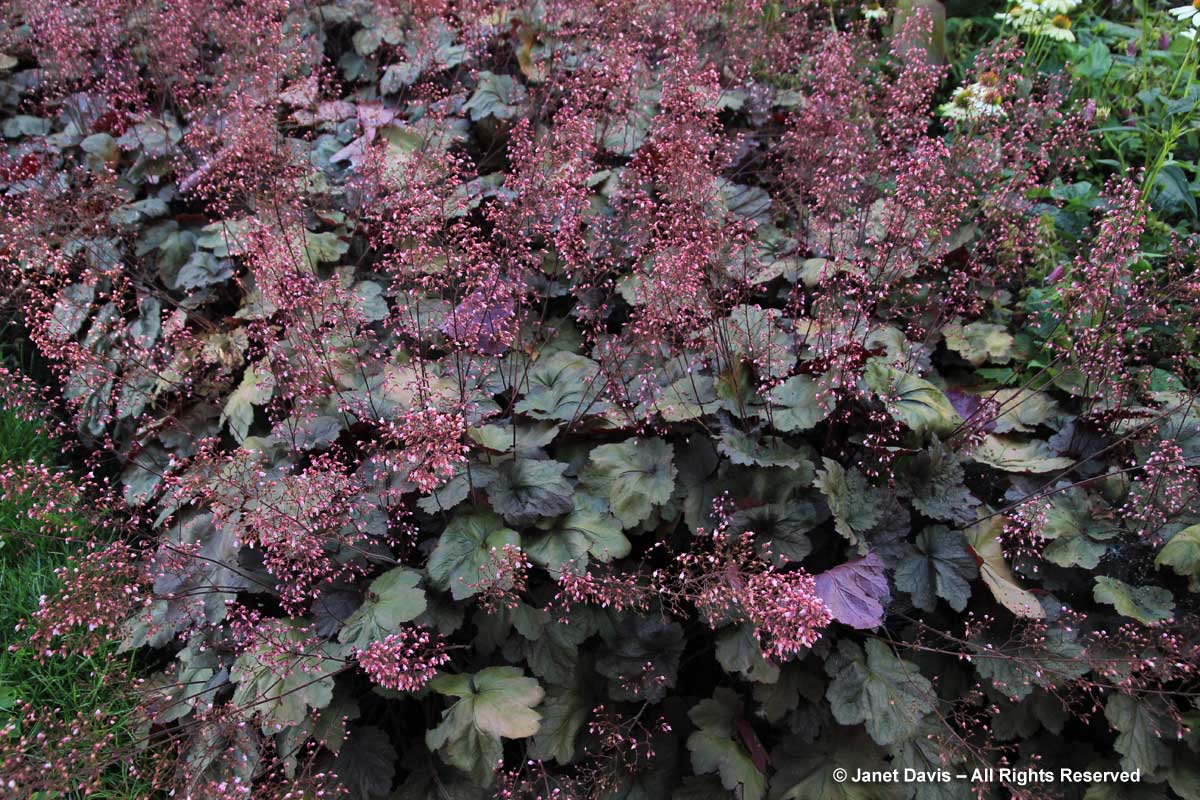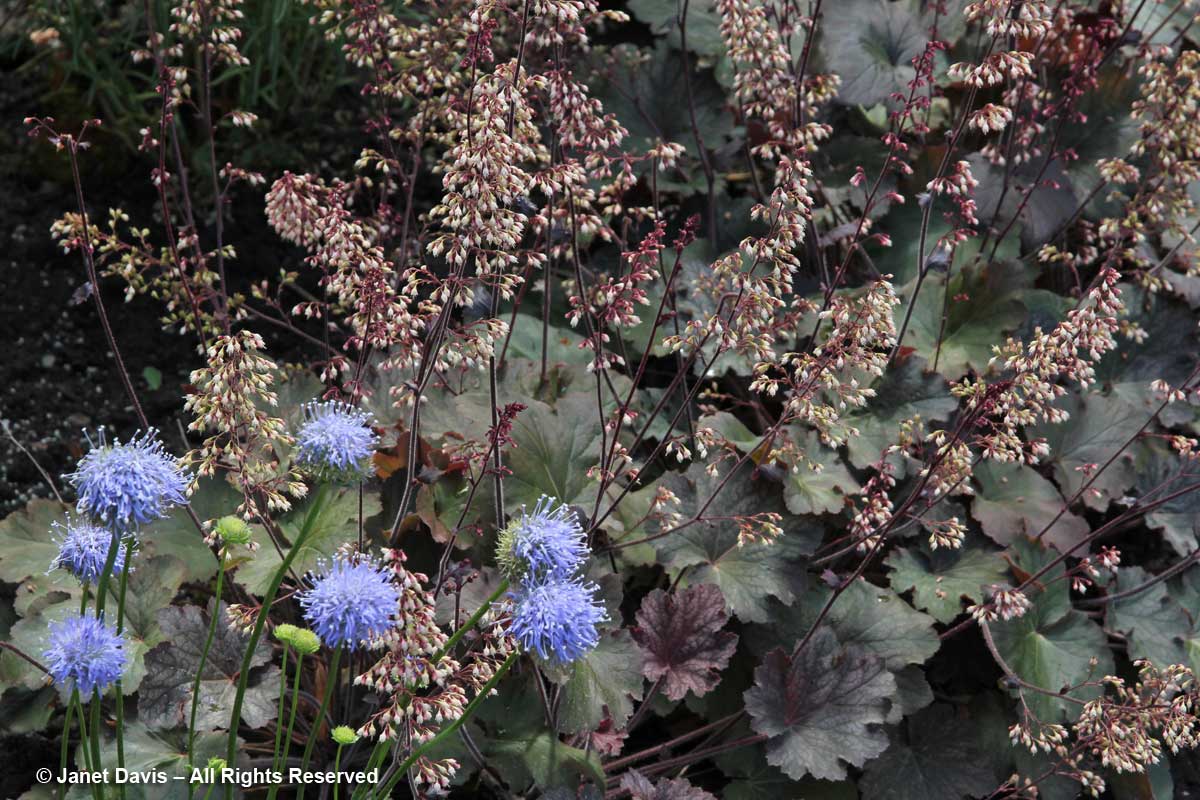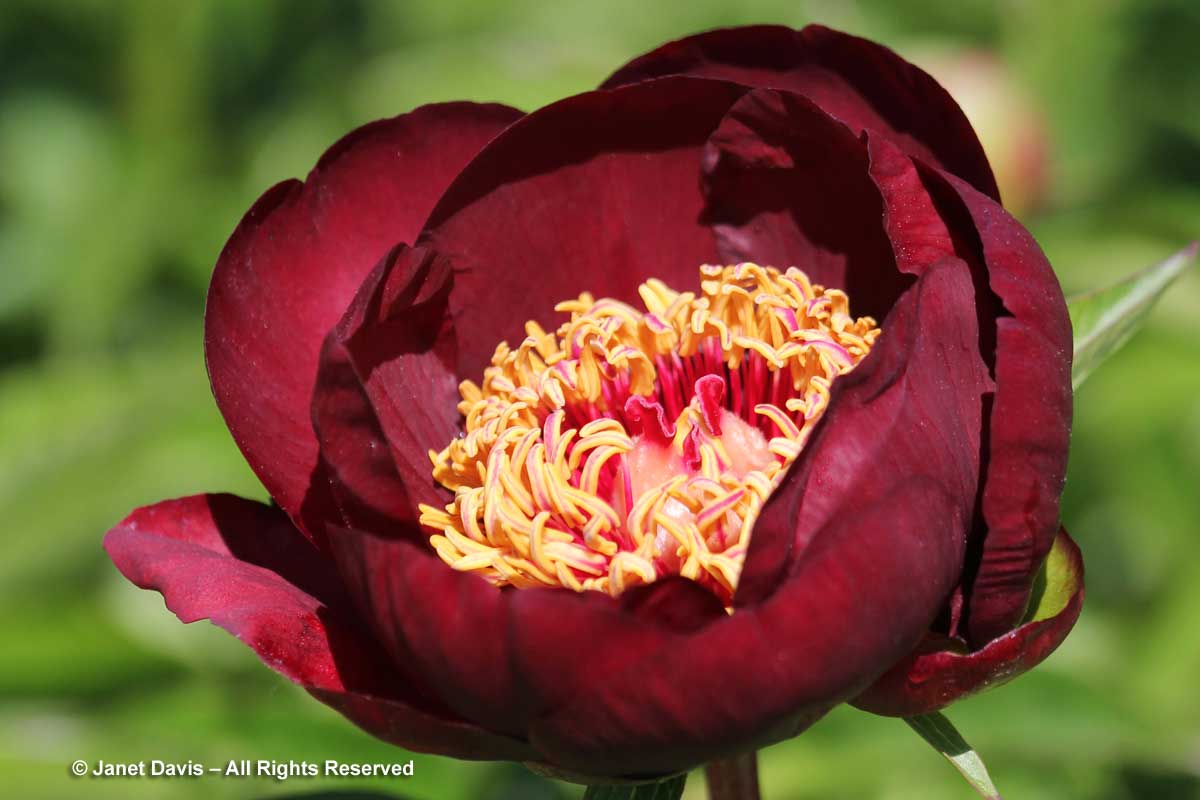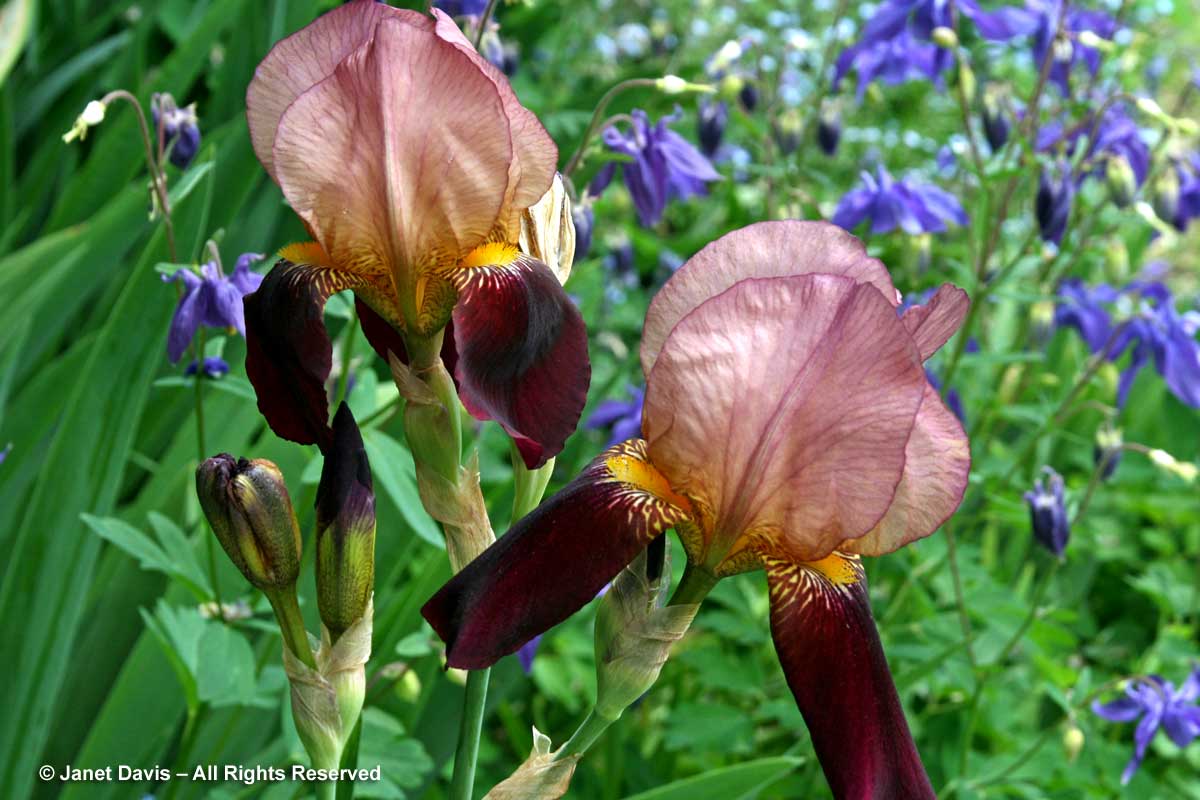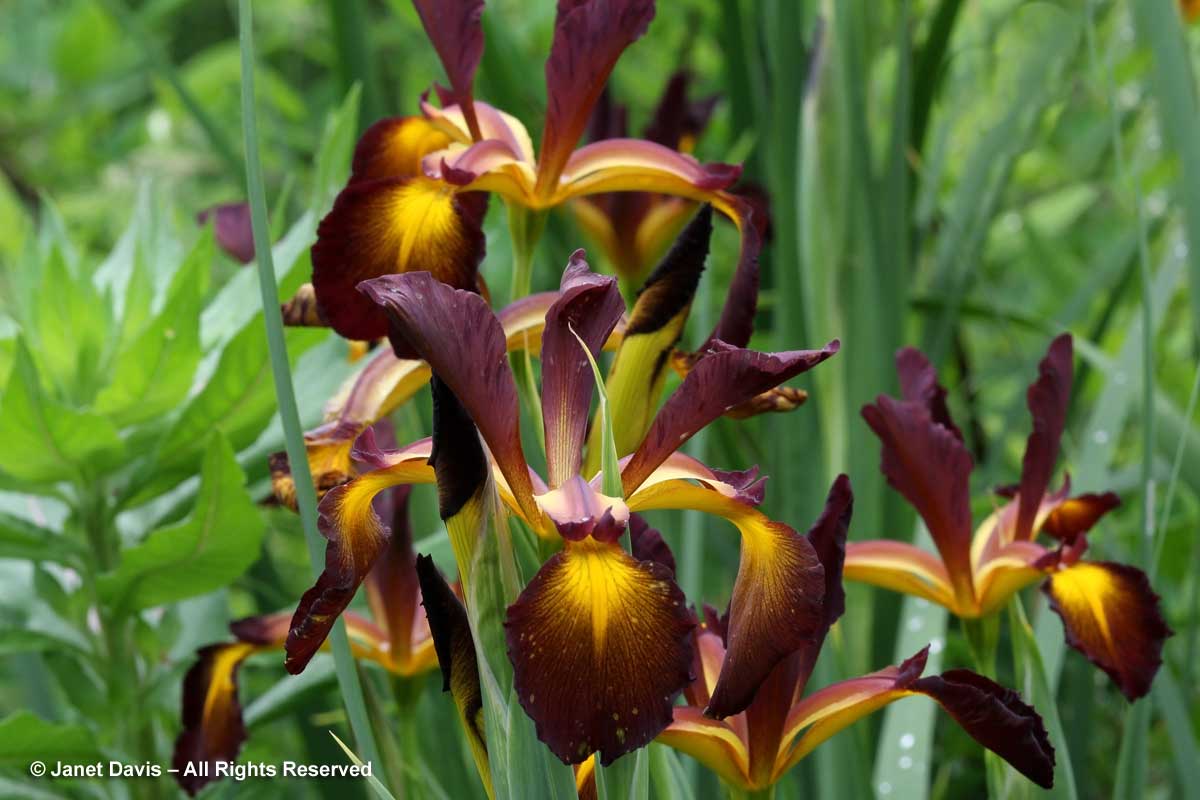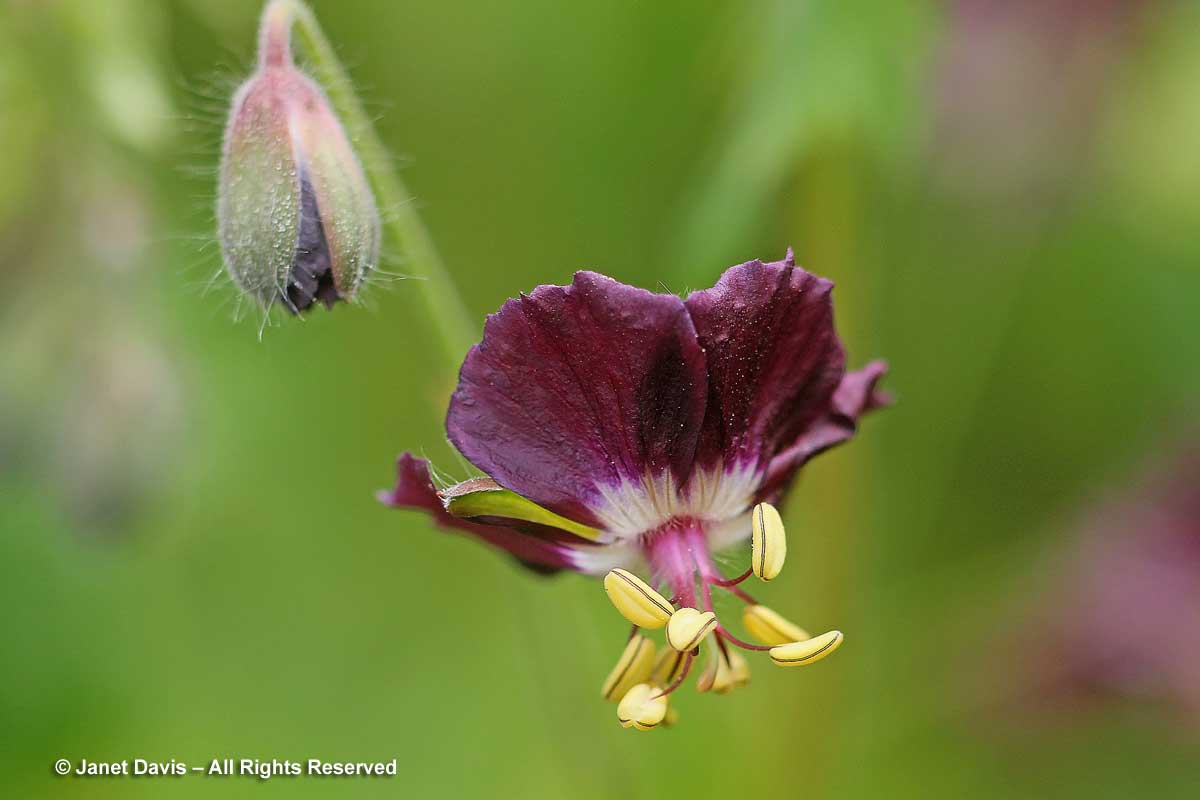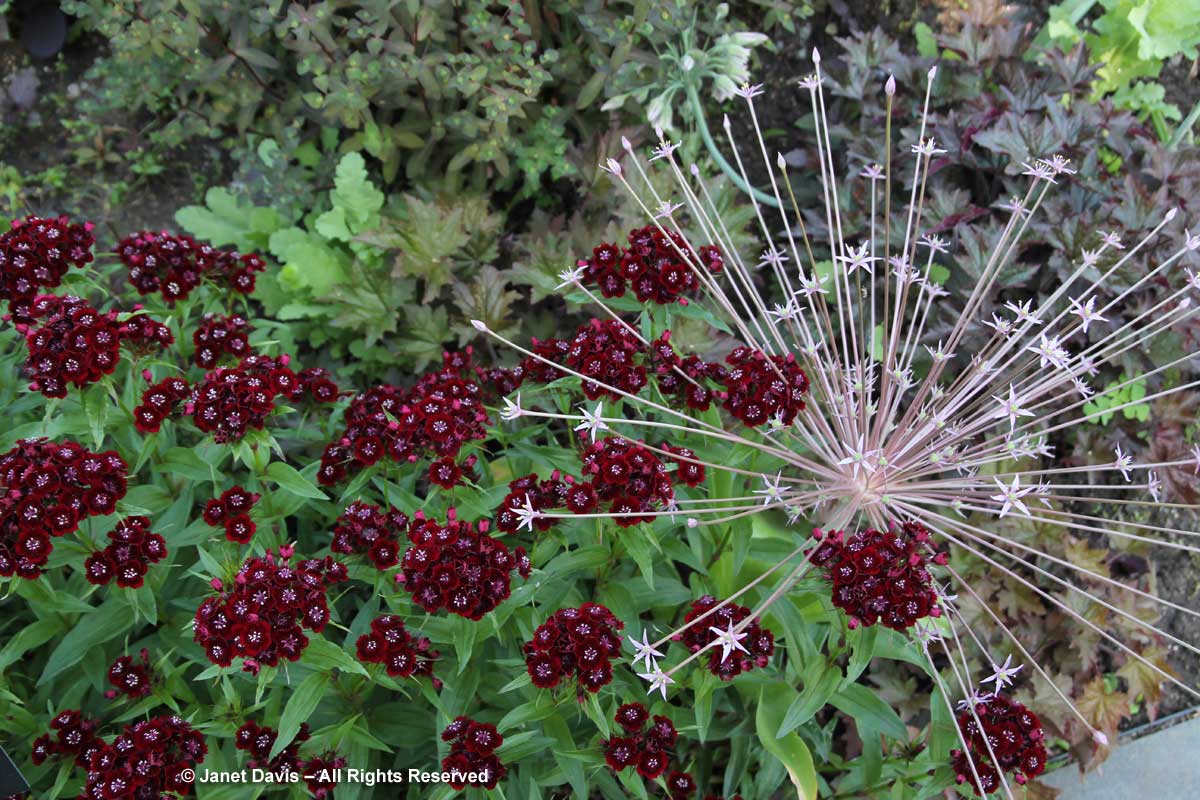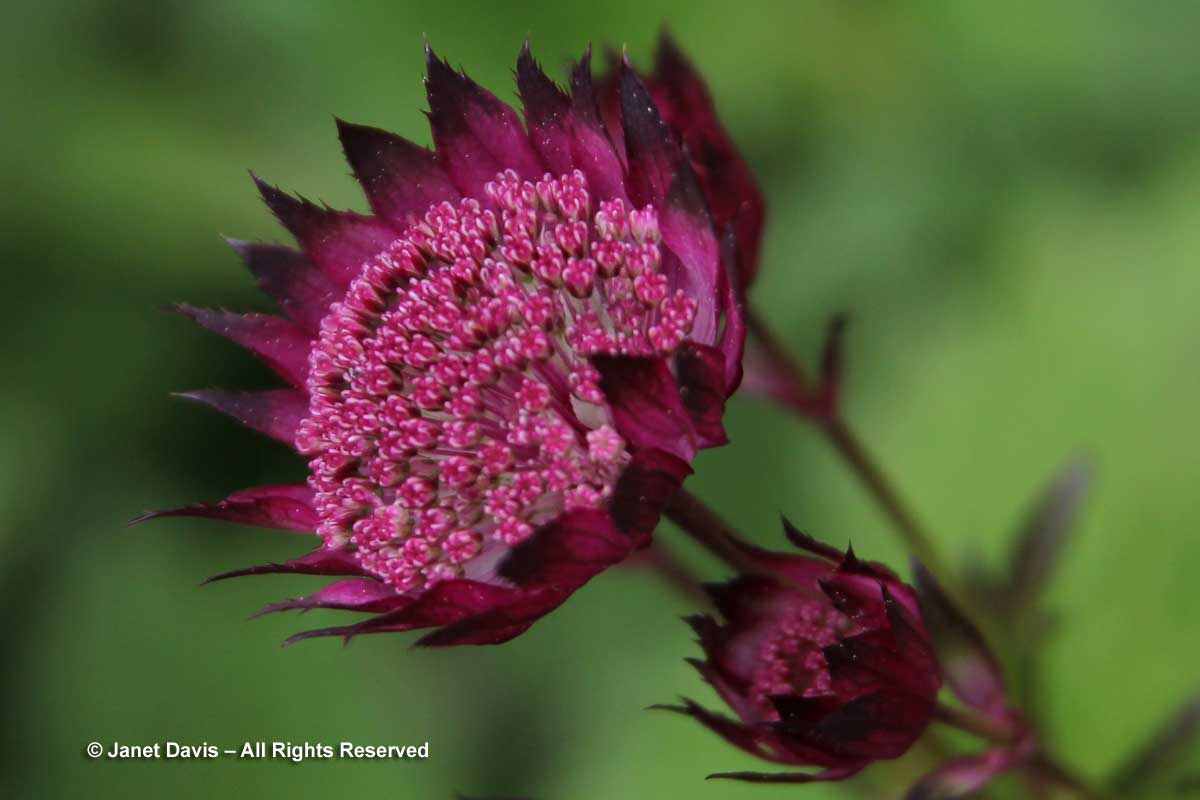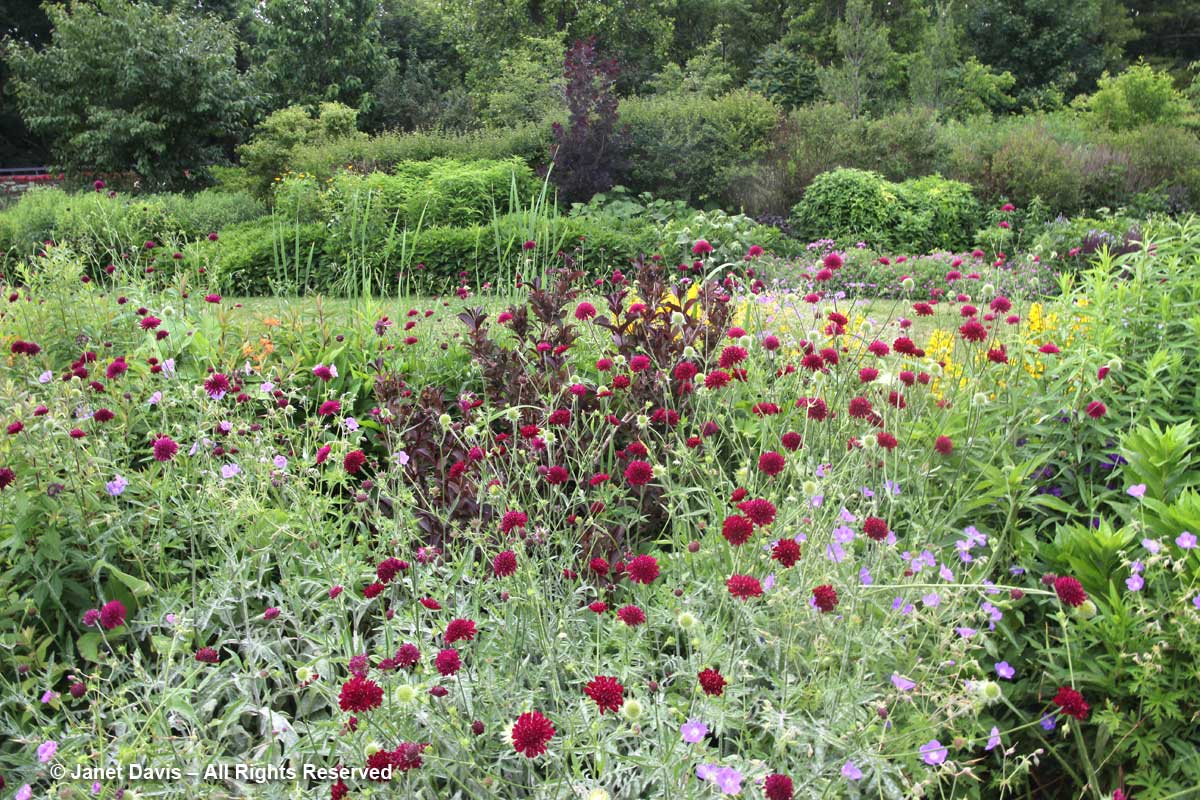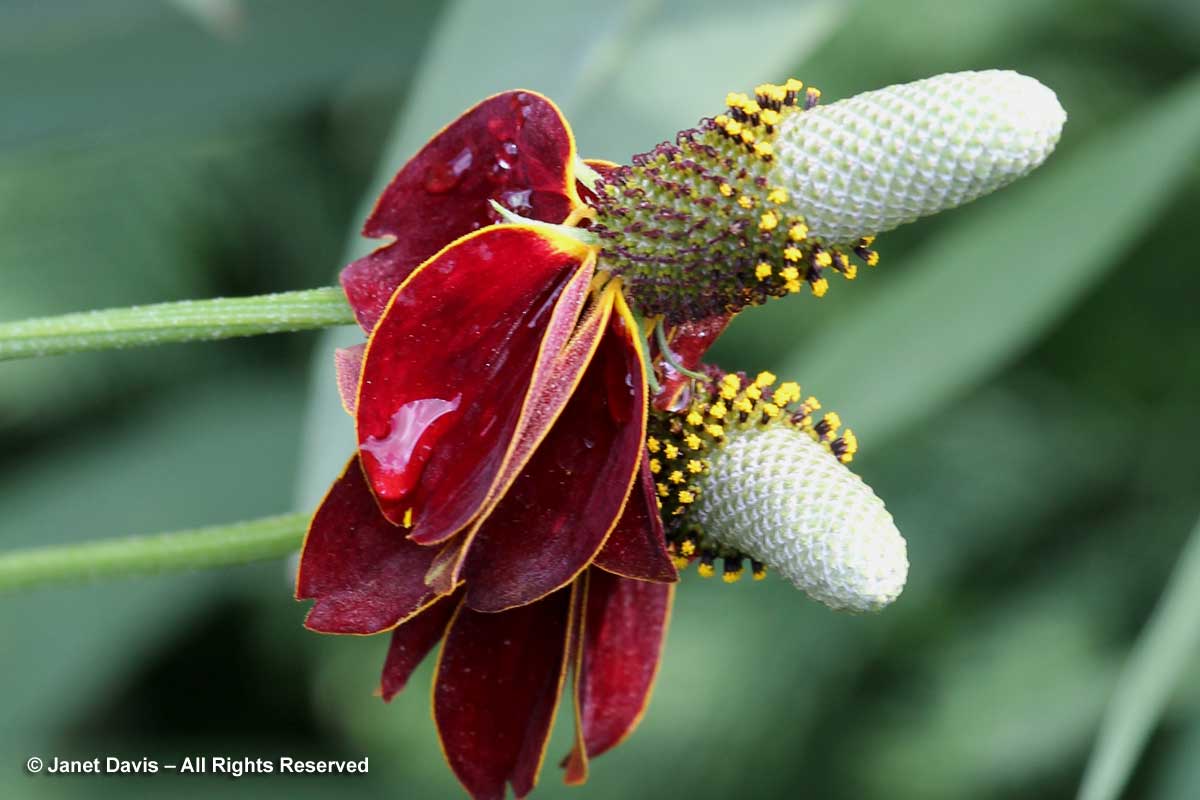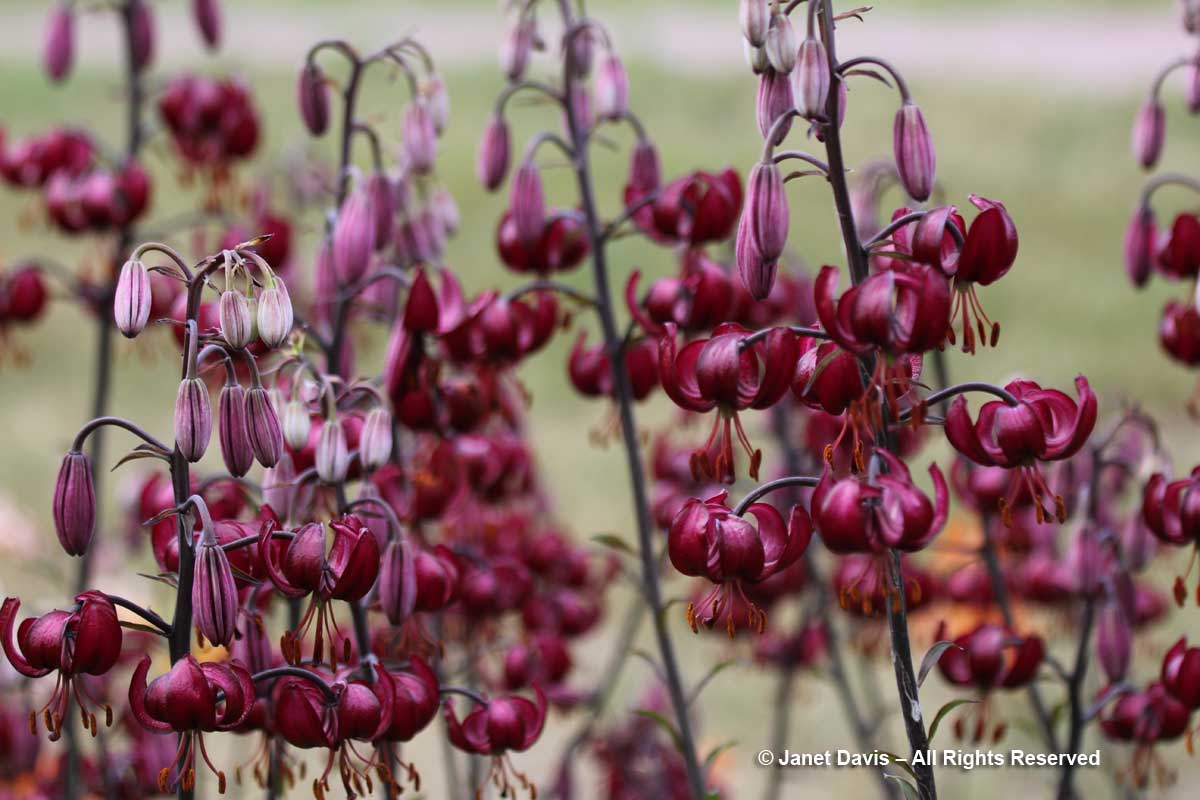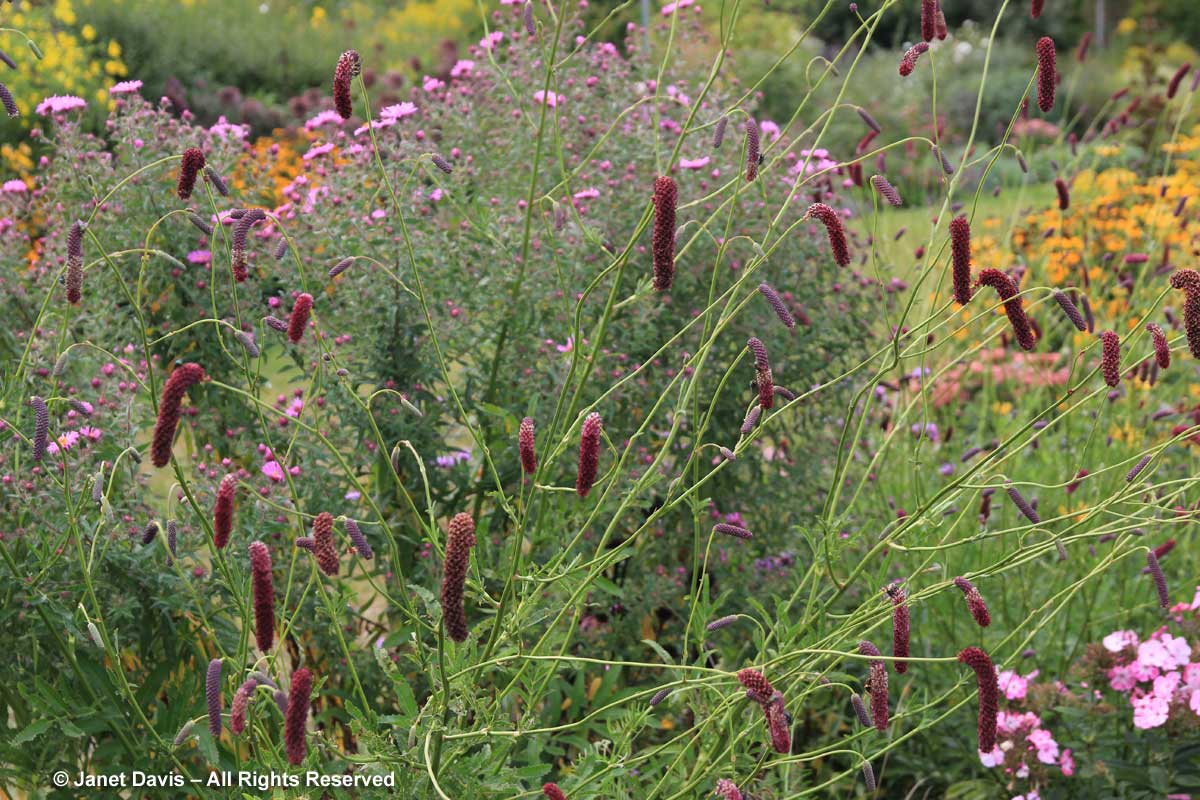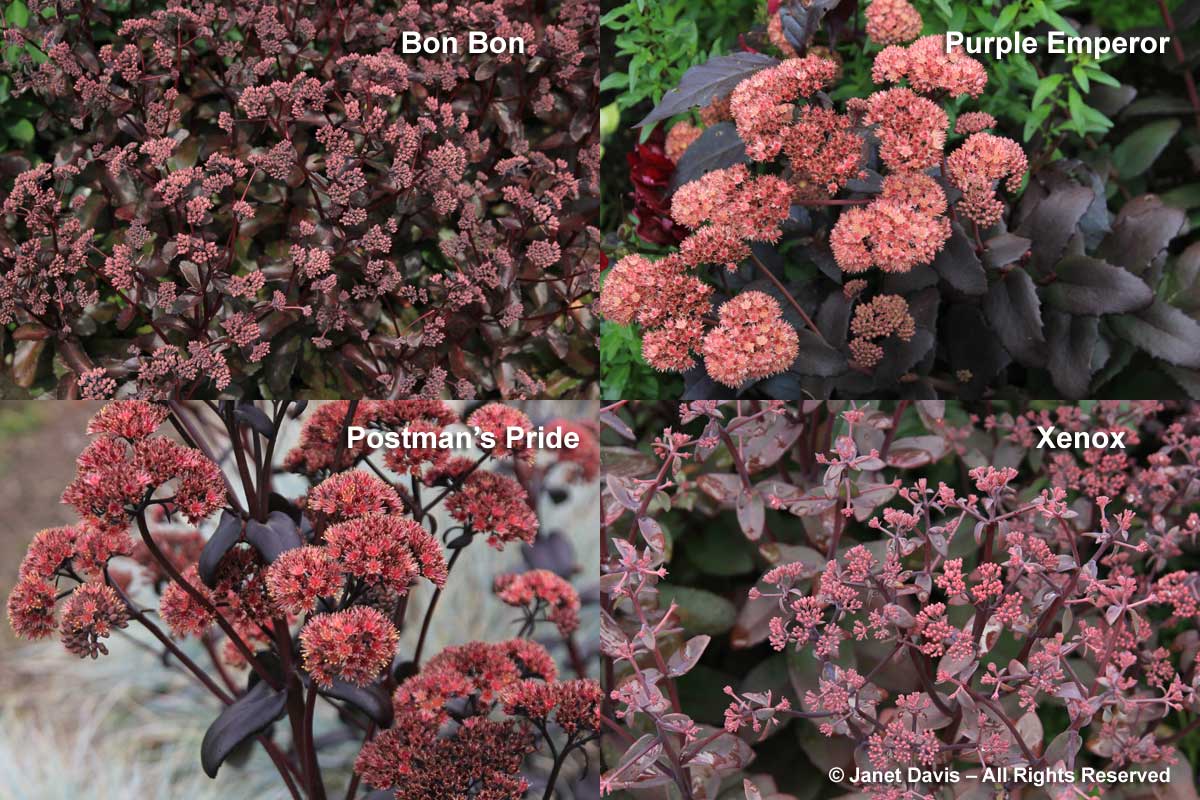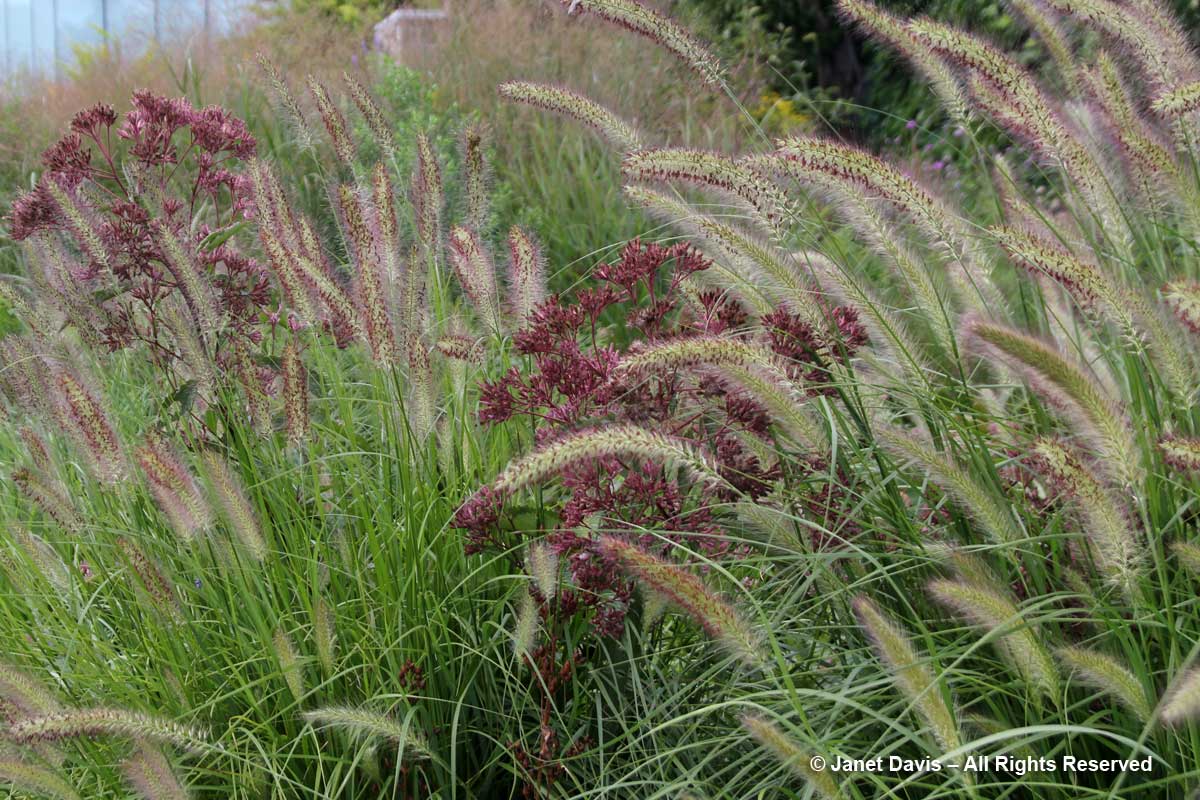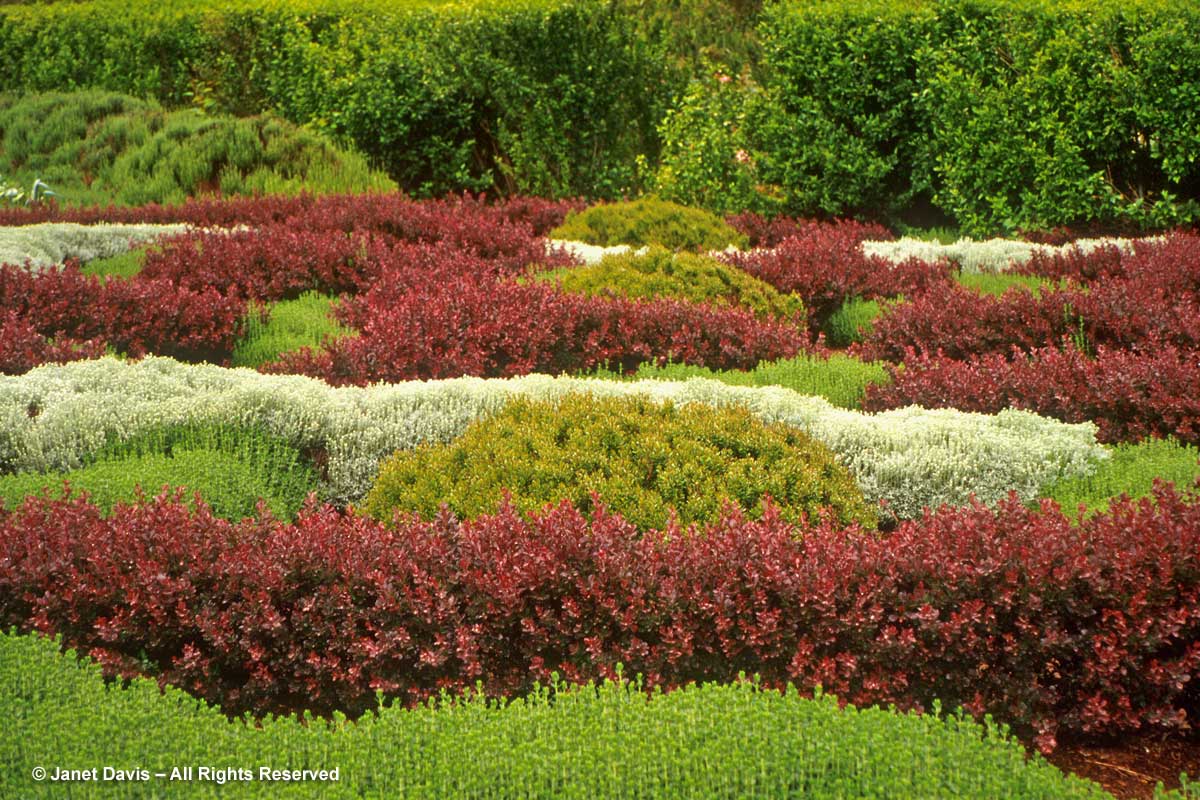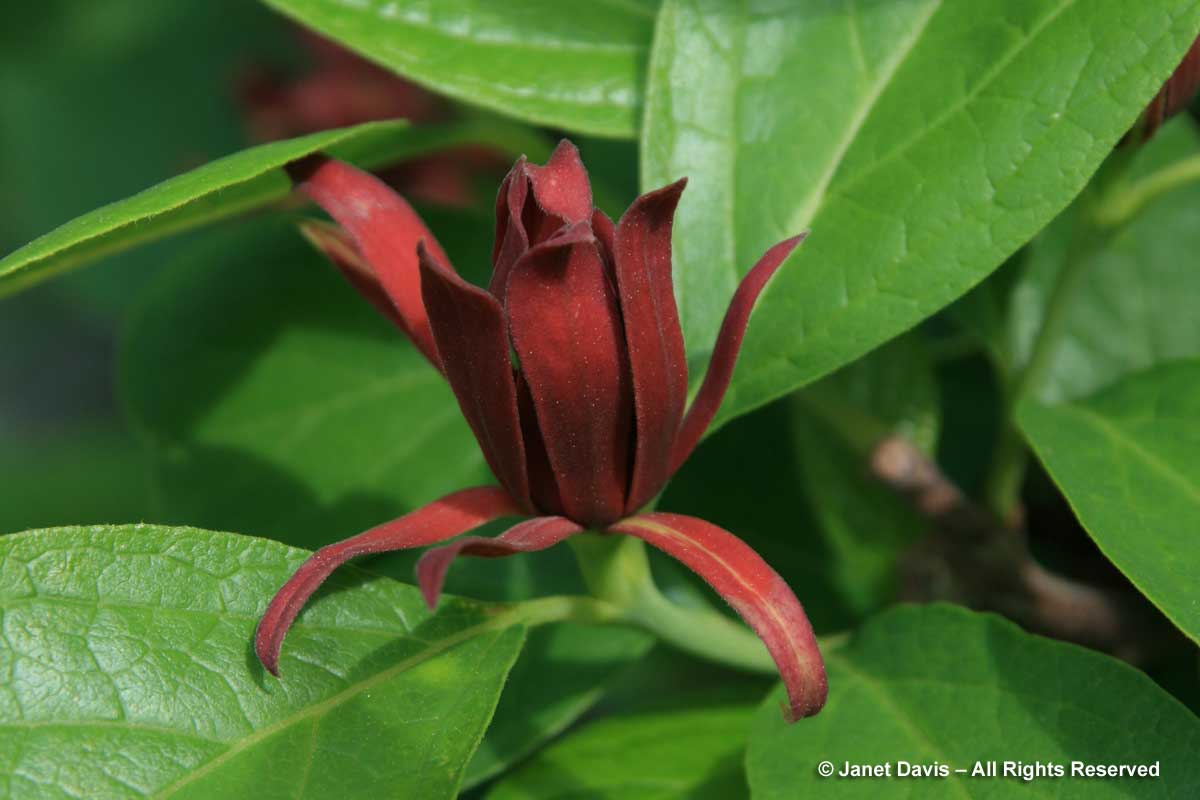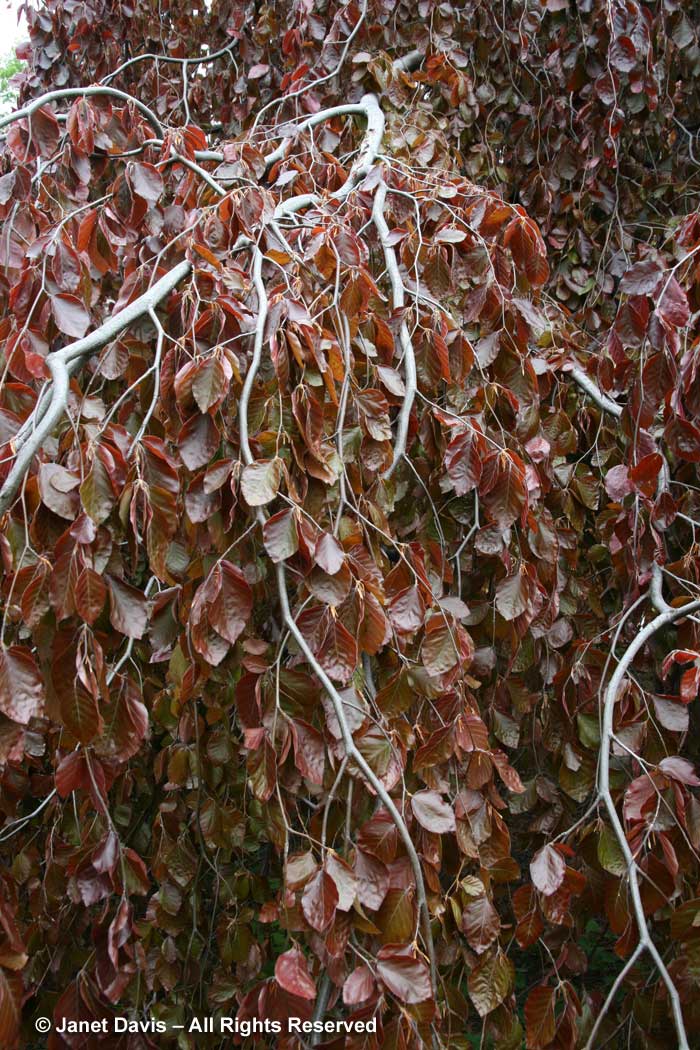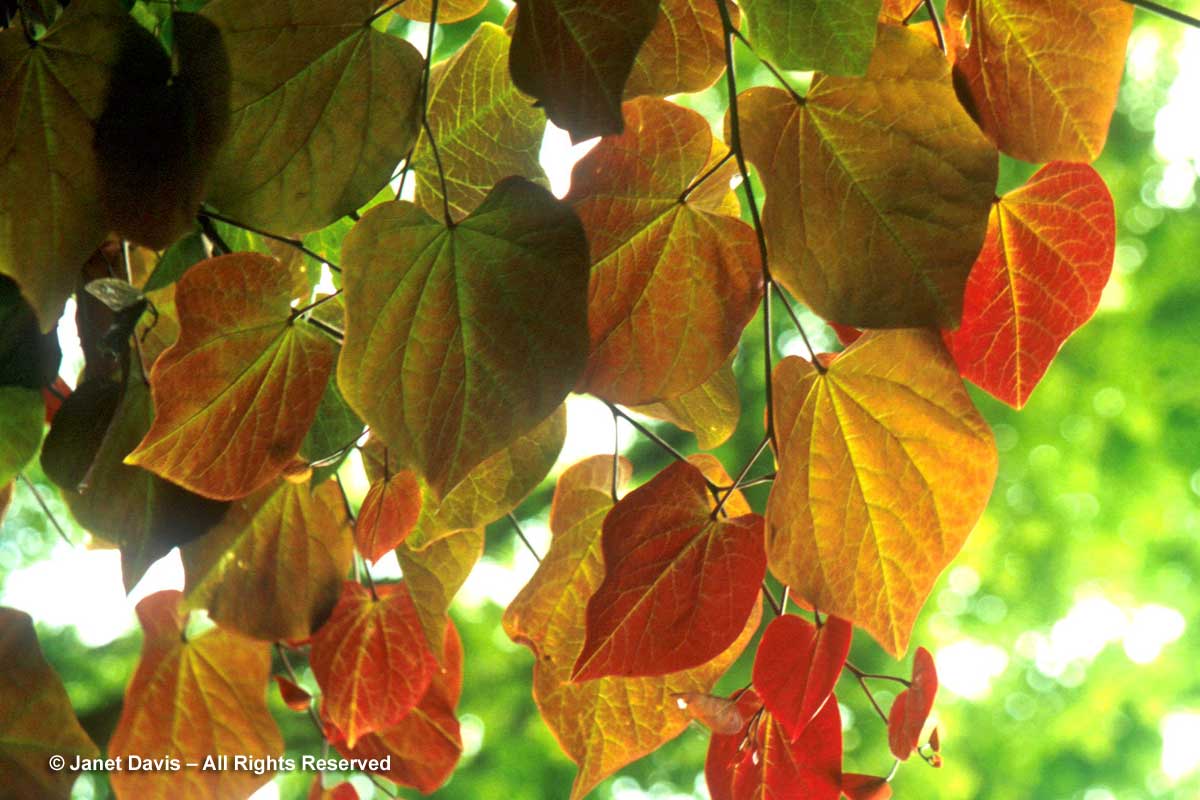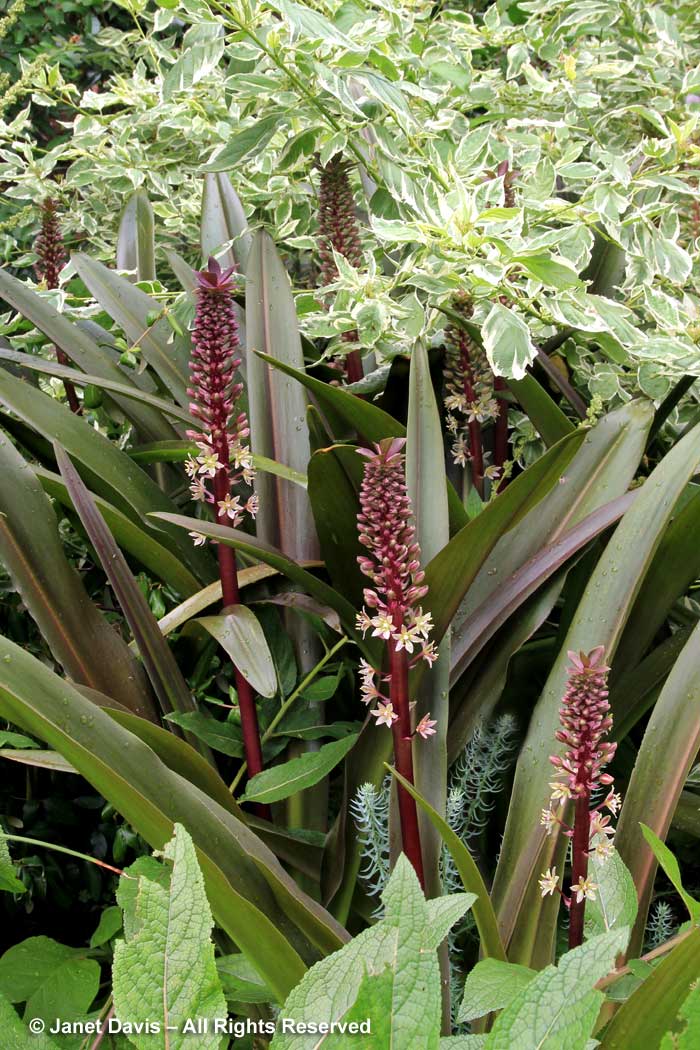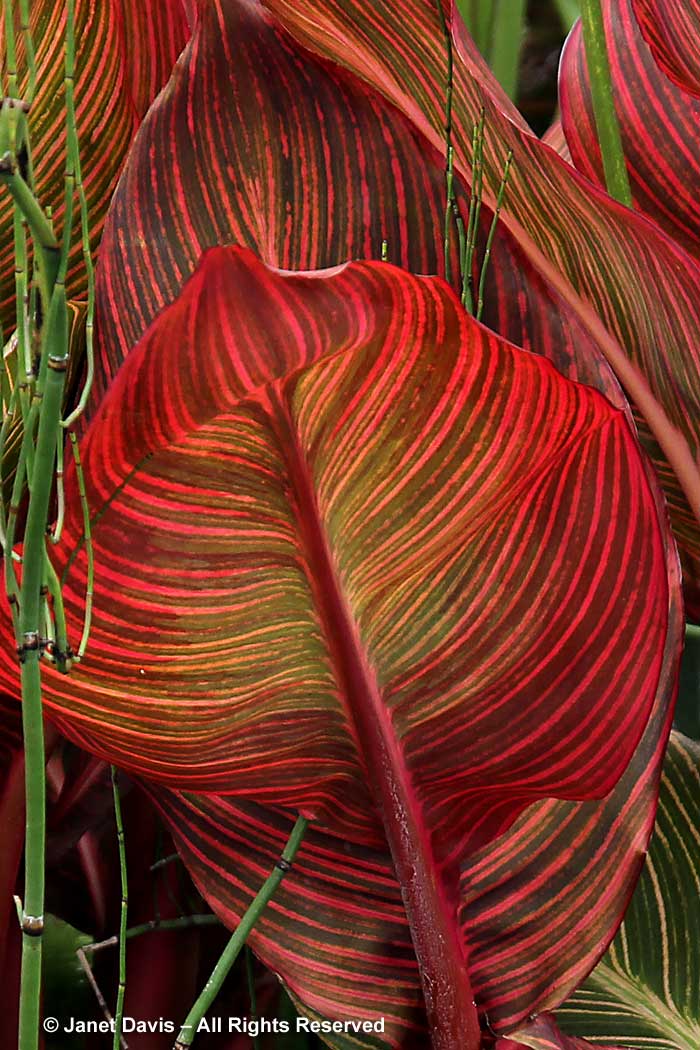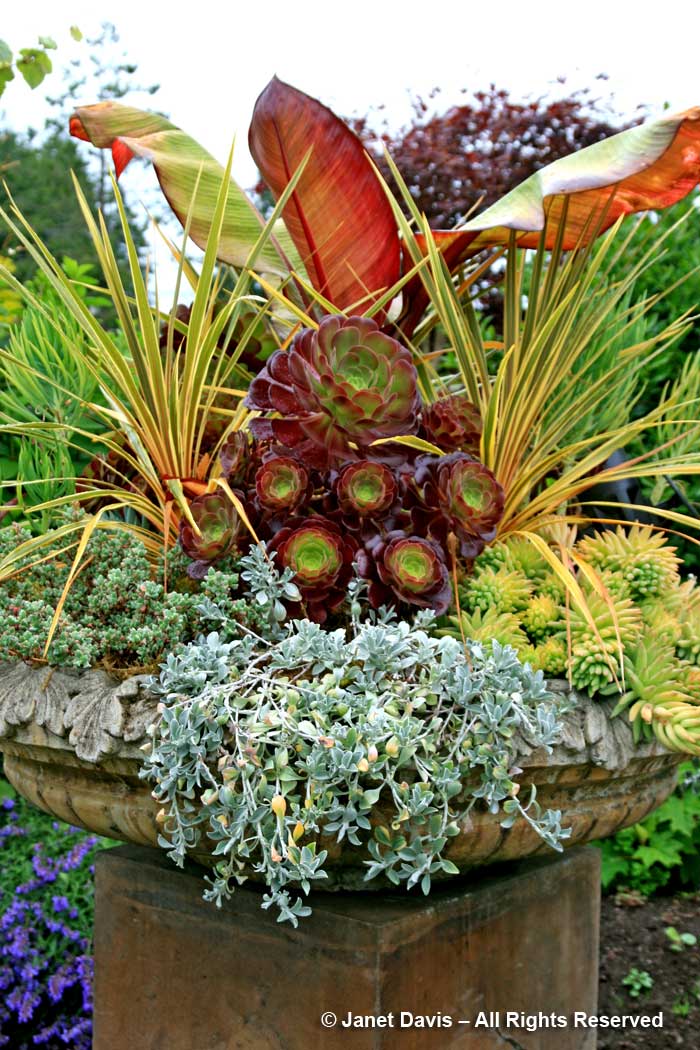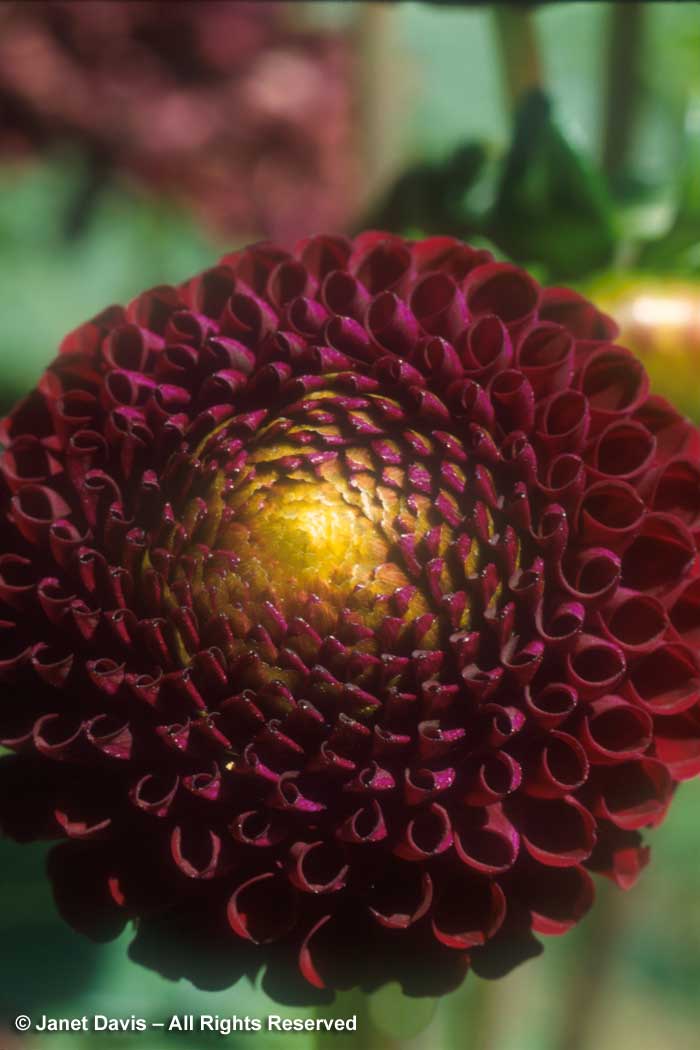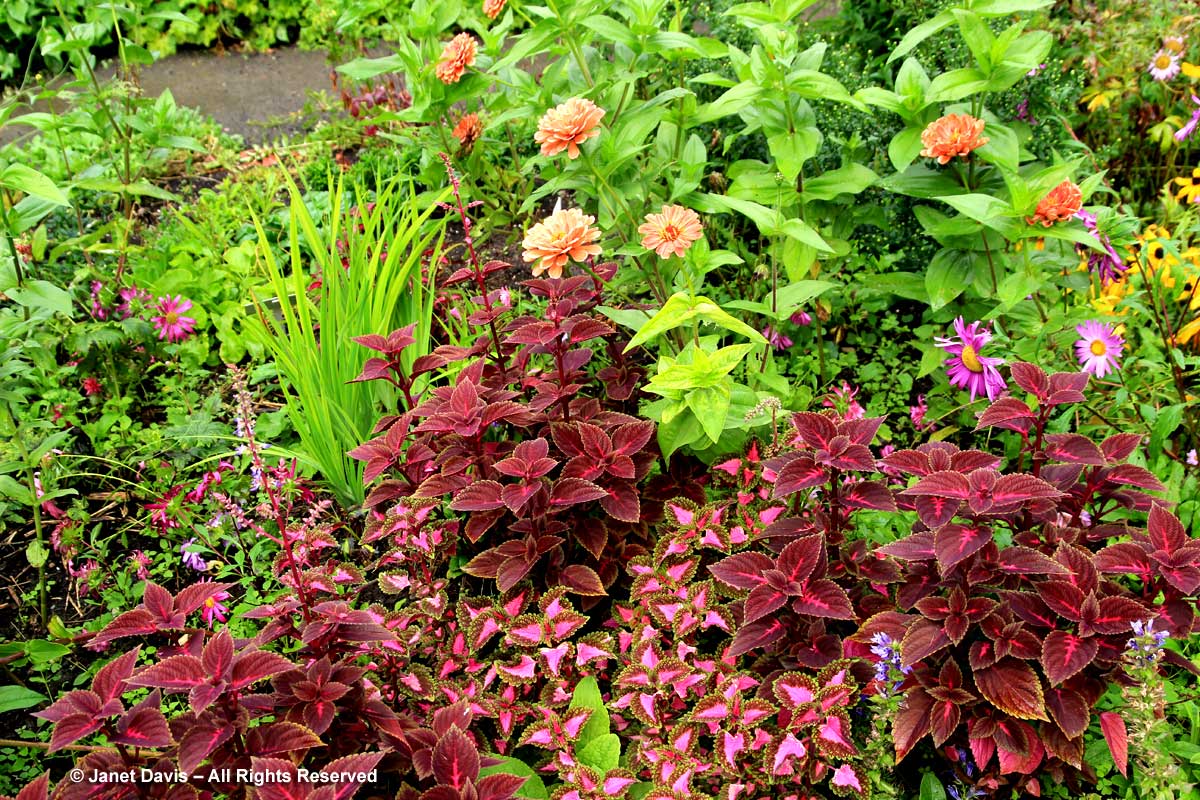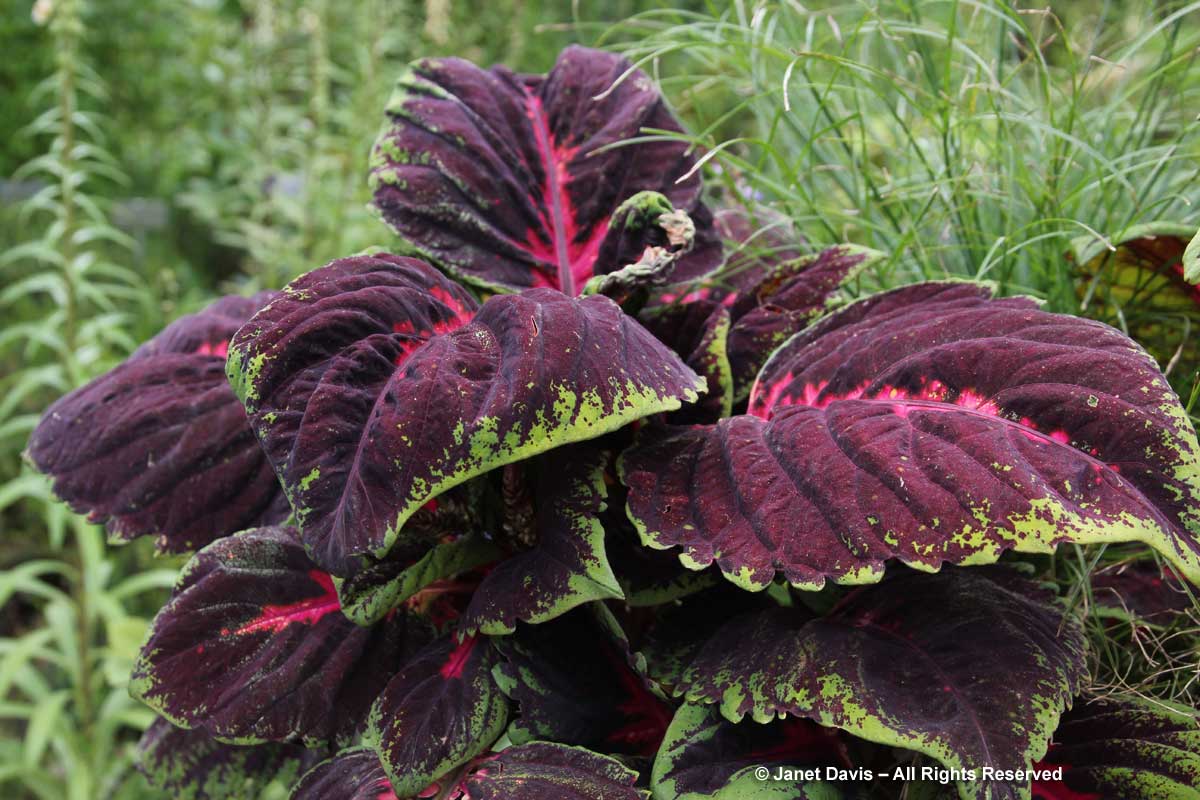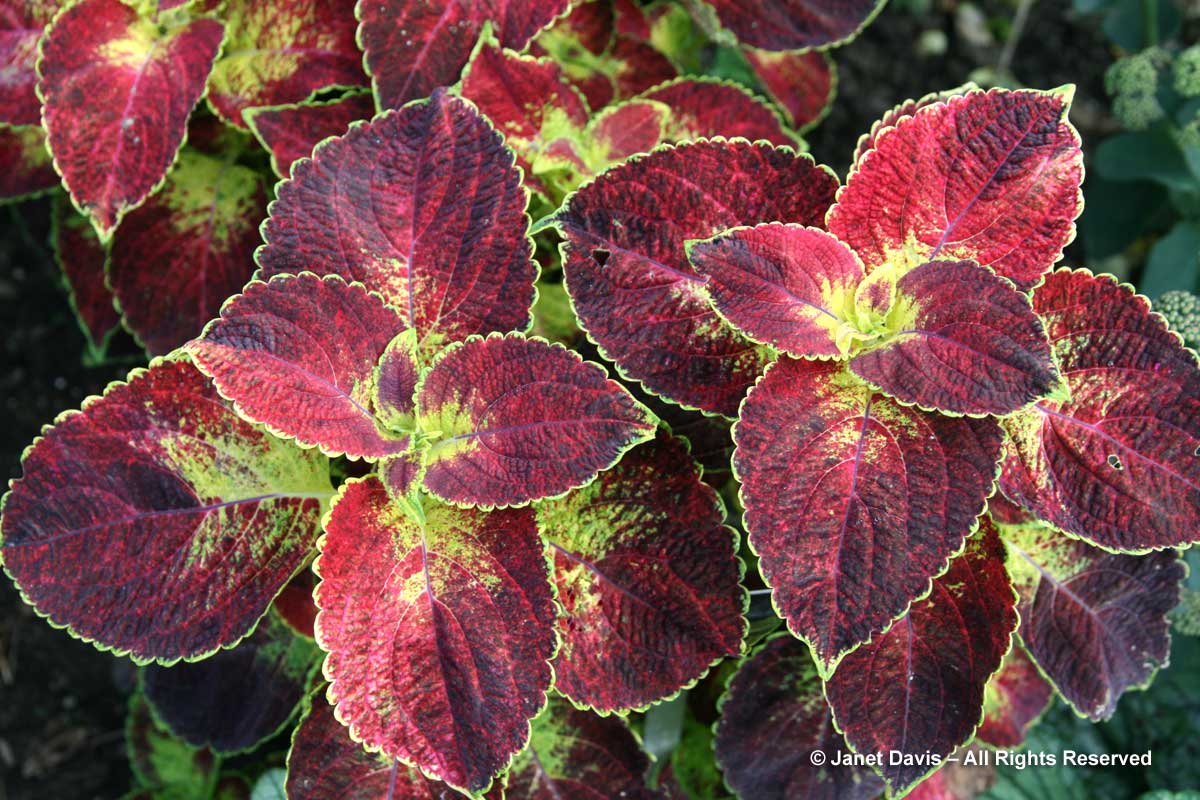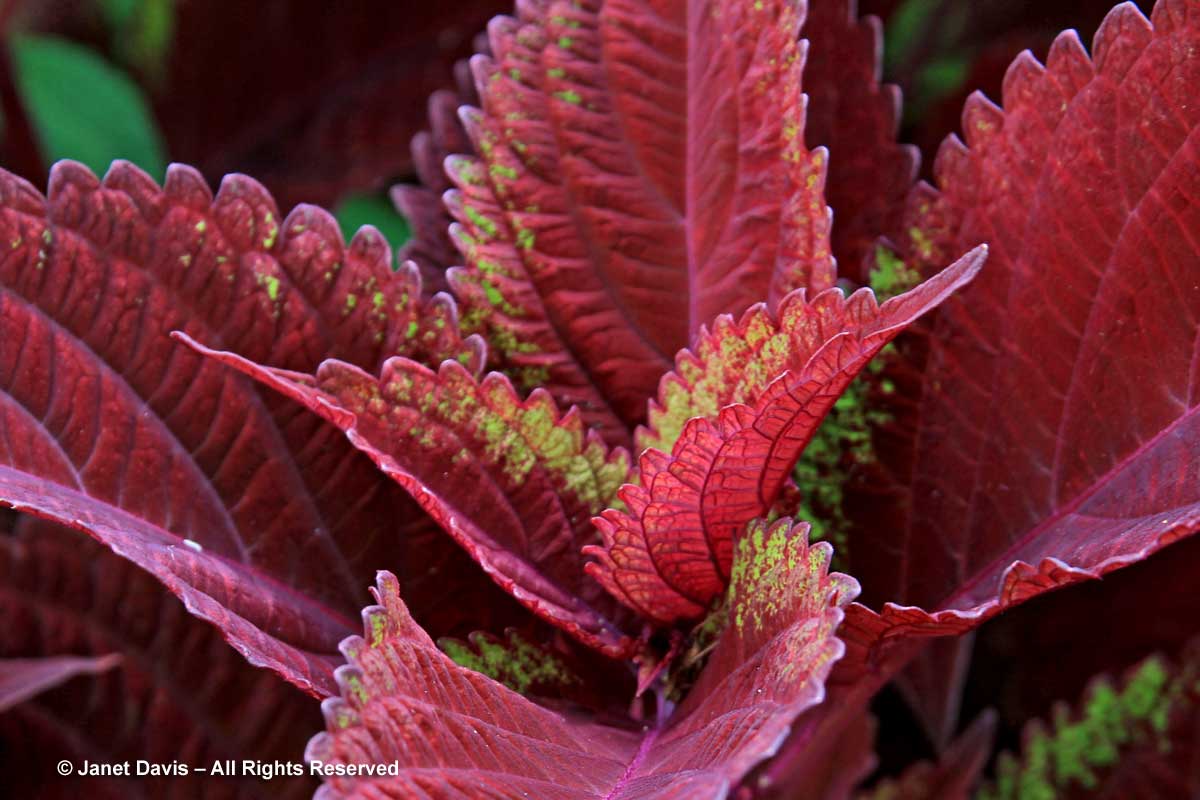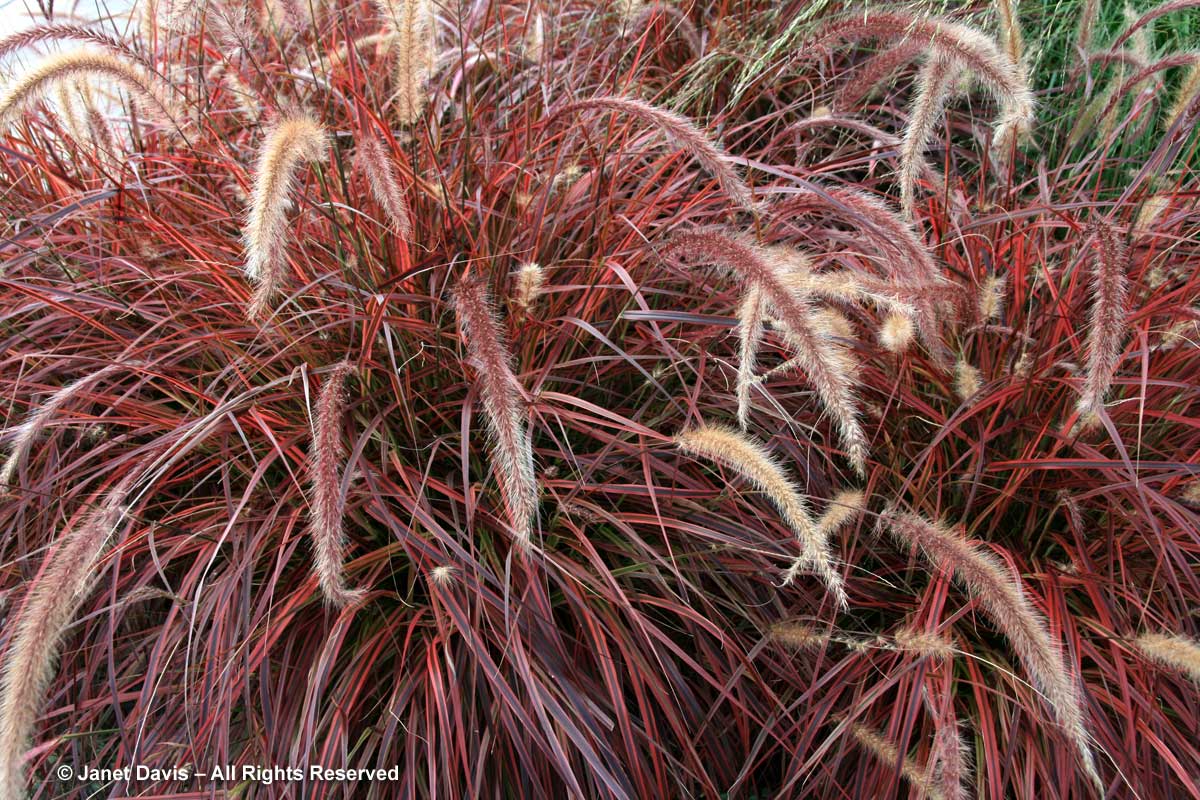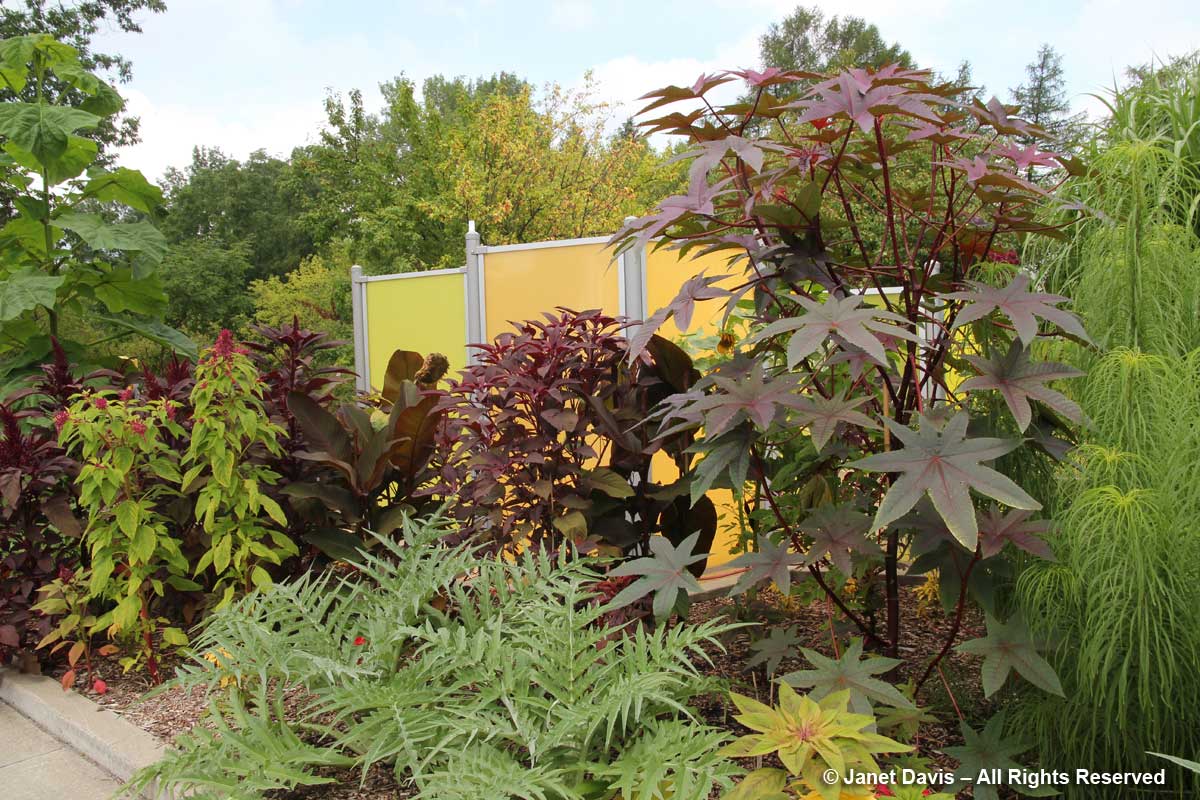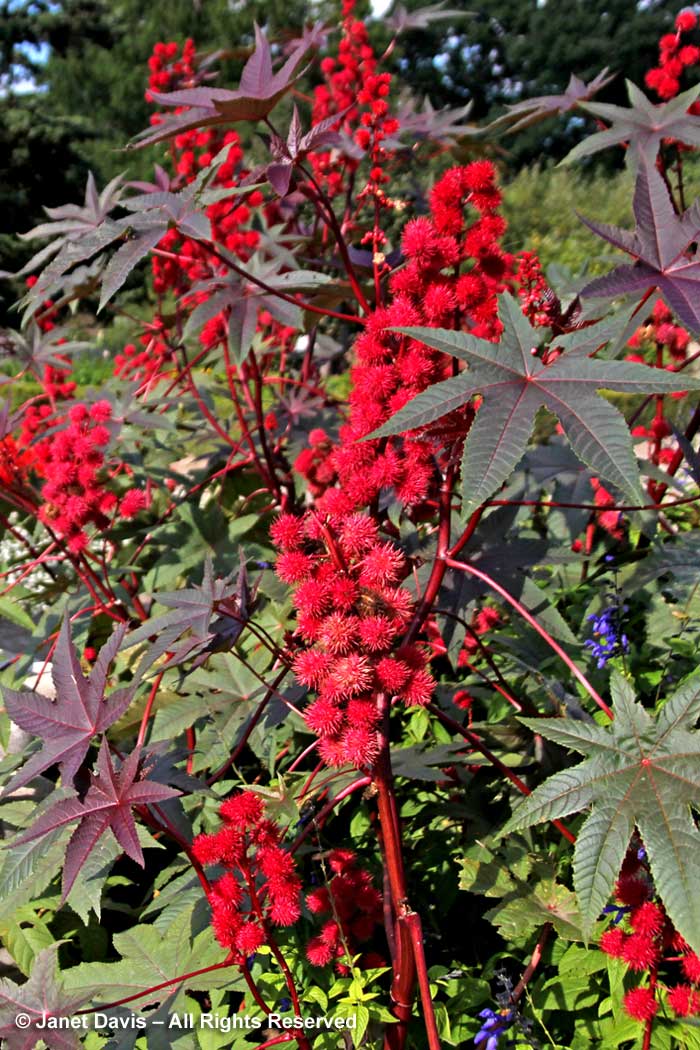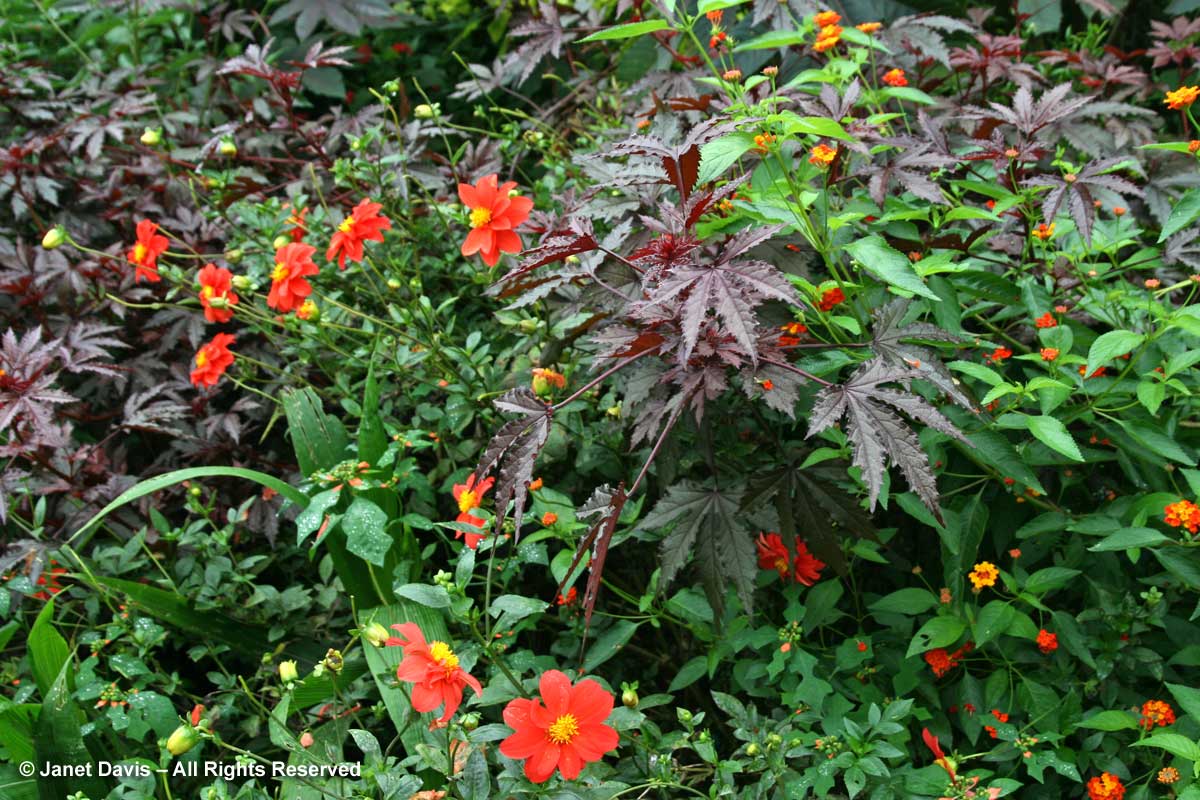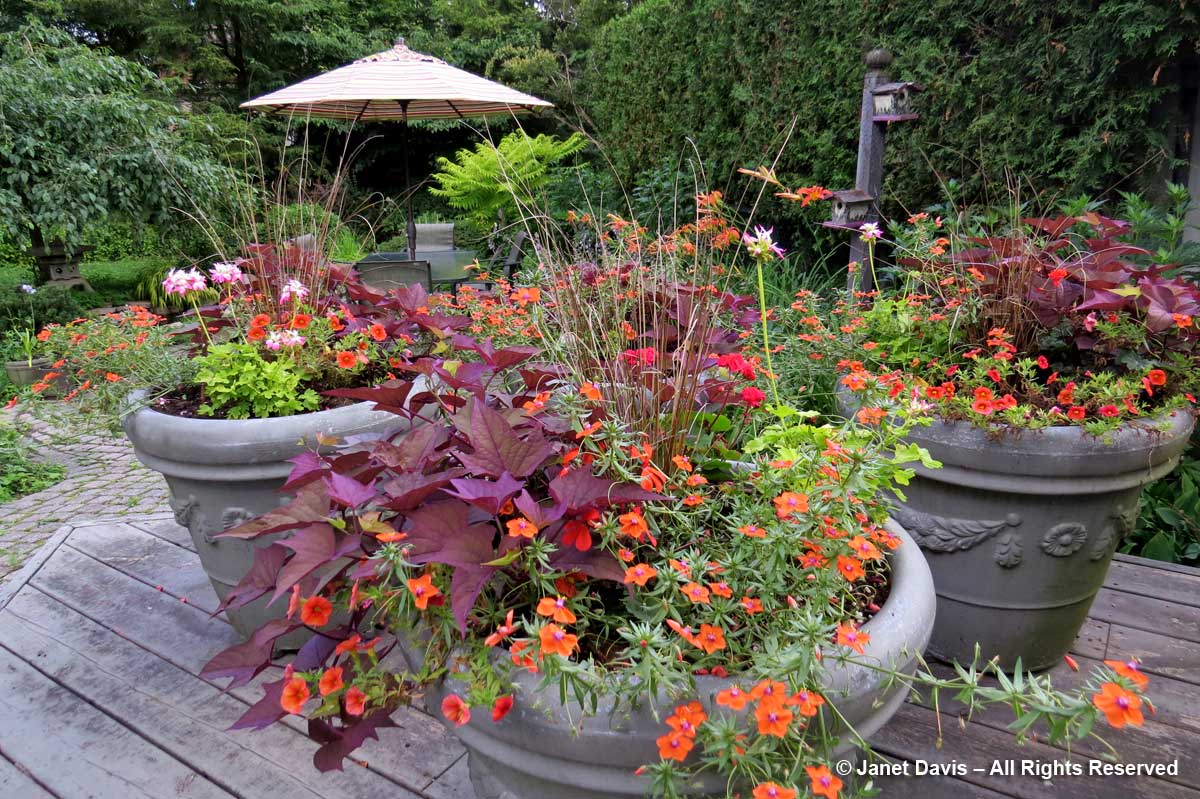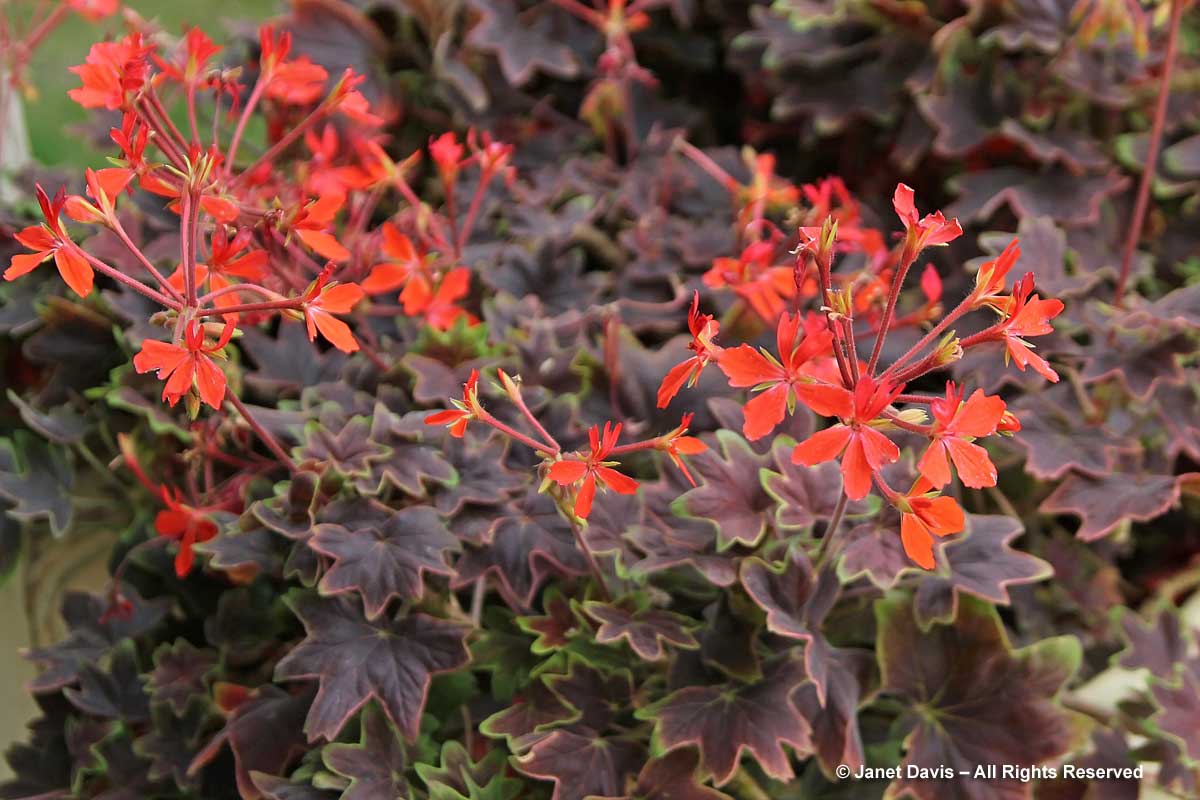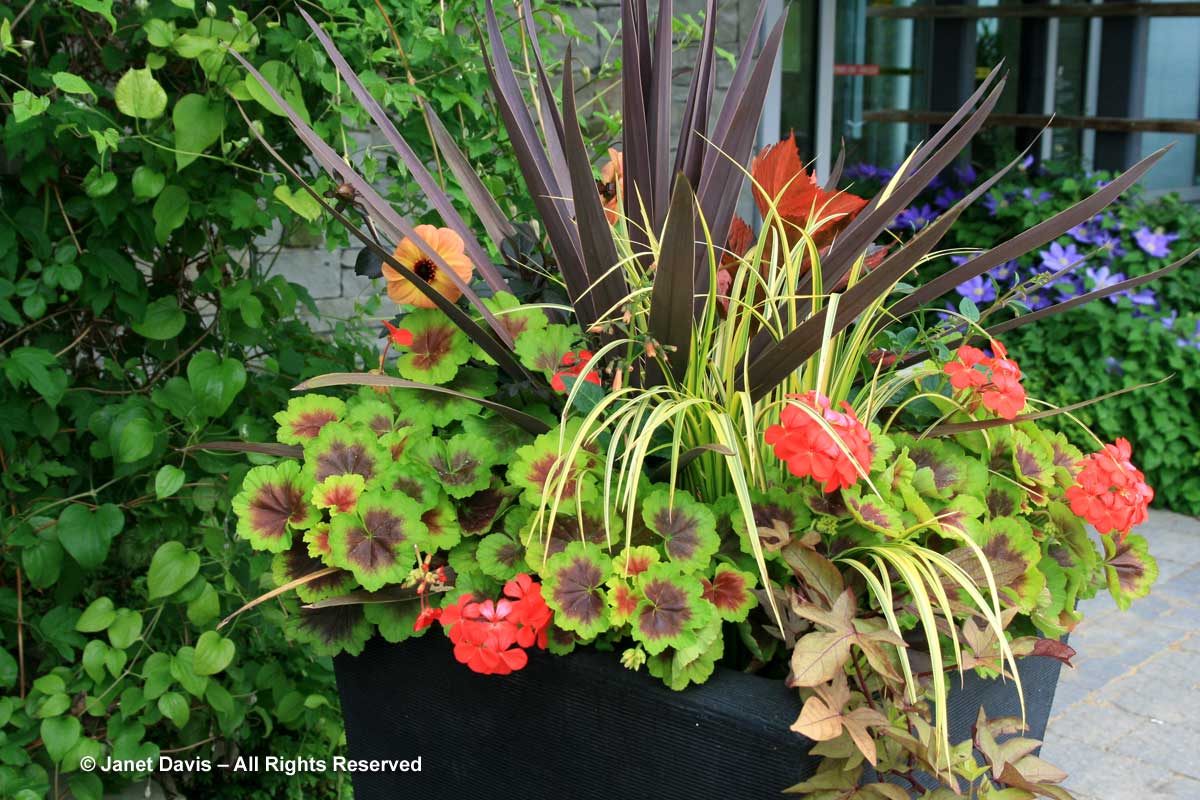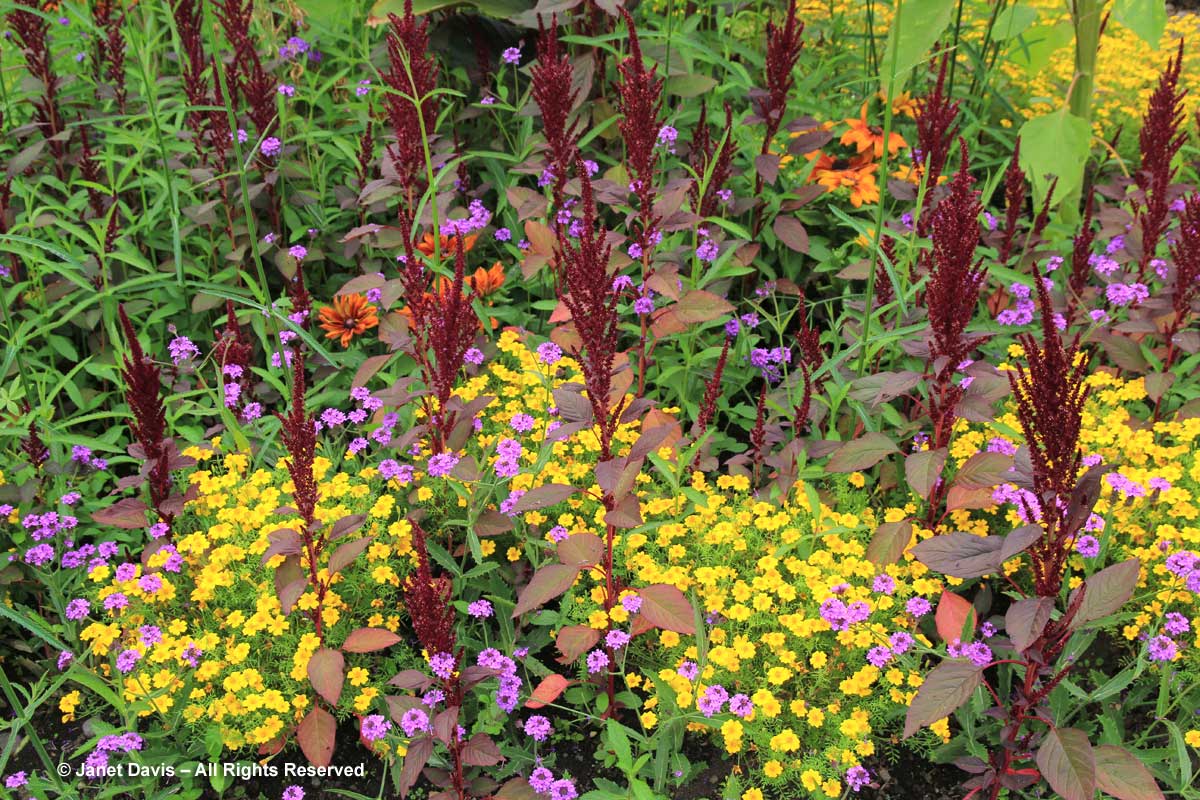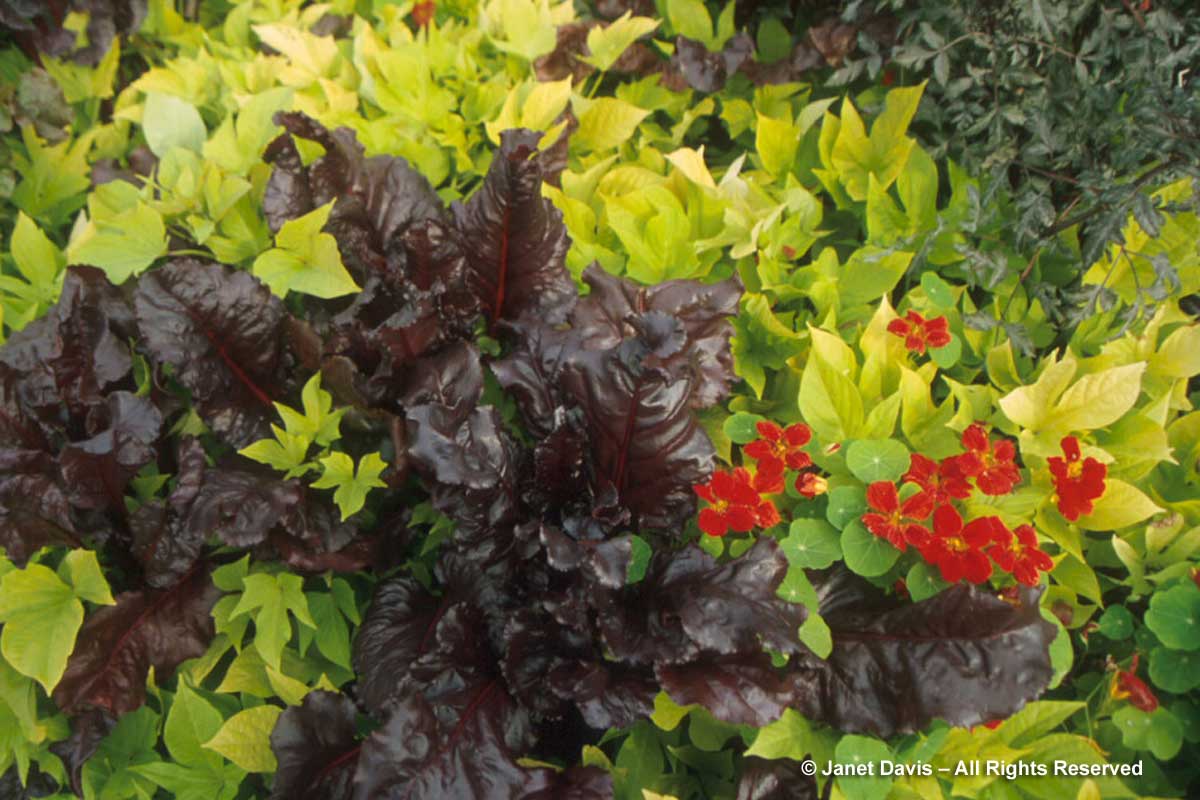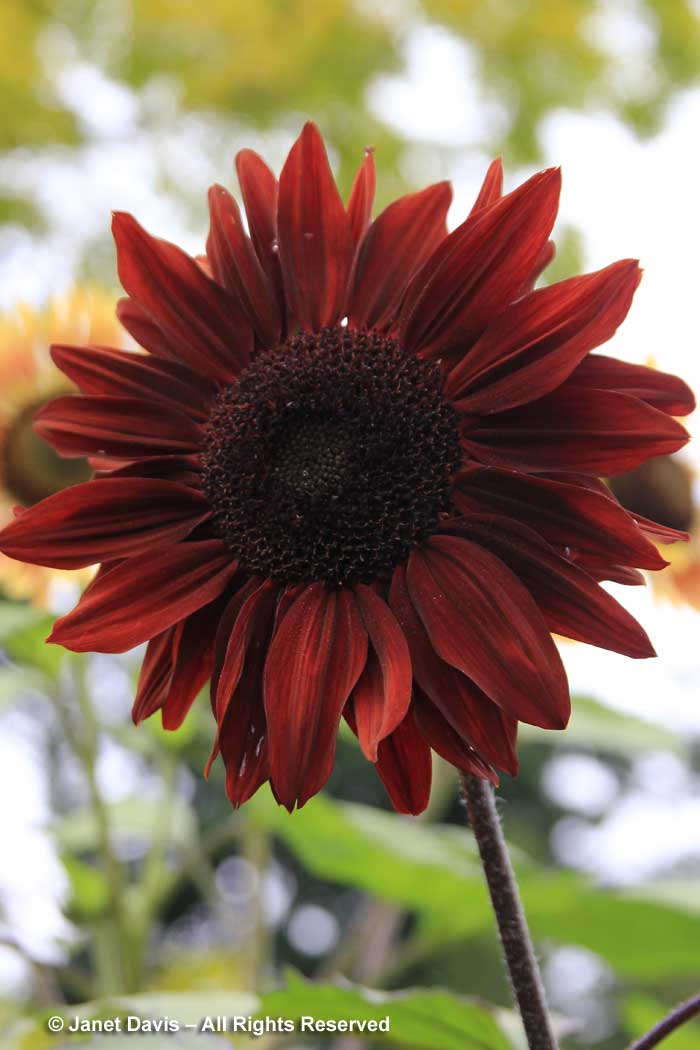This is my month to explore that dark, rich, full-bodied, dowager great-aunt of ‘red’ – otherwise known as ‘wine’. Or burgundy, if you like. Like its viticulture companion, a little wine in the garden goes a long way. Overdo it and you might not like the heavy feeling that results. But a little sip here and there adds depth and elegance to the garden. So let’s sample a few good vintages, shall we?
In my part of the world, spring wines are quite common, given that the Lenten roses or hellebores are flowering in profusion. This is Helleborus ‘Blue Lady’.
There are a few excellent wine-red tulips for later in spring, like the lovely lily-flowered tulip ‘Burgundy’, below.
And I loved this combination of the bicolour Triumph tulip ‘Gavota’ and dark ‘Queen of Night’ at the Toronto Botanical Garden.
I know I might have included the late-flowered tulip ‘Queen of Night’ in my blog on ‘black’ flowers, but it often shows with more red. This is that sensuous tulip spangled through an uncharacteristically wild bulb planting in the very formal Jardin des Tuileries in Paris. Notice how the repetition of the dark colour carries your eye up through the various beds, unifying them and lending them a somewhat ‘designed’ feeling in keeping with the place.
One of the more elegant little spring bulbs is snakeshead fritillary (Fritillaria meleagris). Apart from the checkered, wine-red species, there is a white form as well.
Of all the small trees for gardens, the biggest choice in red-leafed selections can be found in Japanese maples. This is the highly regarded Acer palmatum var. dissectum ‘Inaba-shidare’ at the Toronto Botanical Garden.
But the ubiquitous ‘Bloodgood’ Japanese maple (Acer palmatum) also puts on a beautiful wine-red show throughout summer, and colours beautifully to bright scarlet in fall. Here it is with the Triumph tulip ‘Boston’ in the Mary Fisher Spring Garden at the Toronto Botanical Garden.
One of the best shrubs for adding deep wine-red colour to an herbaceous border is purple smokebush. There are a few cultivars but the most common is Cotinus coggygria ‘Royal Purple’. The trick is to cut it back to the ground, i.e. ‘coppice’ it, in spring. Here is ‘Royal Purple just emerging with tulips.
Here is coppiced ‘Royal Purple’ a little later in the season with a lovely matching brushmark lily (possibly ‘Latvia’) in Bev Koppel’s wonderful garden at the Deep Cove Chalet Restaurant outside Victoria, B.C.
Here is coppiced Cotinus coggygria ‘Royal Purple’ with tropical Tibouchina urvilleana at the Conservatory Garden in New York’s Central Park.
And in Toronto horticulturist Frank Kershaw’s garden, there is an entire symphony of wine colour around Cotinus coggygria ‘Royal Purple’, including shutters, window awning and dwarf Japanese barberry.
Given all the hybridizing that’s occurred with heucheras over the past few decades, there are numerous selections with luscious leaves of burgundy and reddish-purple. At the Horticulture Centre of the Pacific outside Victoria, B.C., I adored this beautiful spring combination featuring Heuchera ‘Amethyst Mist’, Allium aflatunense ‘Purple Sensation’ and the dark-leafed ninebark Physocarpus ‘Diablo’ at rear.
Heuchera micrantha ‘Rachel’ is quite lovely.
And Heuchera ‘Pinot Noir’ has a name that fits our theme very nicely. It’s shown below frolicking with blue-flowered Gilia capitata.
One stunning peony is dark enough to be called ‘wine’, even if its actual name describes another favourite indulgence. Here is Paeonia ‘Chocolate Soldier’.
Though true-red irises have eluded hybridizers, there are many that come close to our November colour. Below is the heritage bearded iris ‘Col. Candelot’. Other deep-reds to check out are ‘Red at Night’, ‘Galactic Warrior’, ‘War Chief’, ‘Raptor Red’ and ‘Nebraska Big Red’, to name just a few.
And what about this gorgeous thing? Meet Iris spuria ‘Cinnabar Red’.
Though the mourning widow geranium (Geranum phaeum) is a little on the purplish side, I’ve included it here anyway. (And it’s a great bee flower!)
The breeders of the sweet William (Dianthus barbatus) below decided on a memorable name for their dark-flowered beauty. Meet ‘Heart Attack’, hanging out here with airy Allium schubertii at Wave Hill in the Bronx.
Early summer gives us masterworts (Astrantia major), and though many seem to be wishy-washy in their colouration, that’s not the case with ‘Hadspen Blood’, below, from Nori and Sandra Pope’s once glorious garden.
I simply adore Knautia macedonica with its dark-red button flowers that flower from spring well into autumn. It is the zingiest zing you can have in a border (or meadow), and all the bees love it, too.
Daylilies (Hemerocallis) aren’t really my thing anymore, other than the dear old orange tawny lily (H. fulva) that I have given up trying to annihilate in my garden. That being said, there are lots of wine-colored selections to choose from, including the lovelies below.
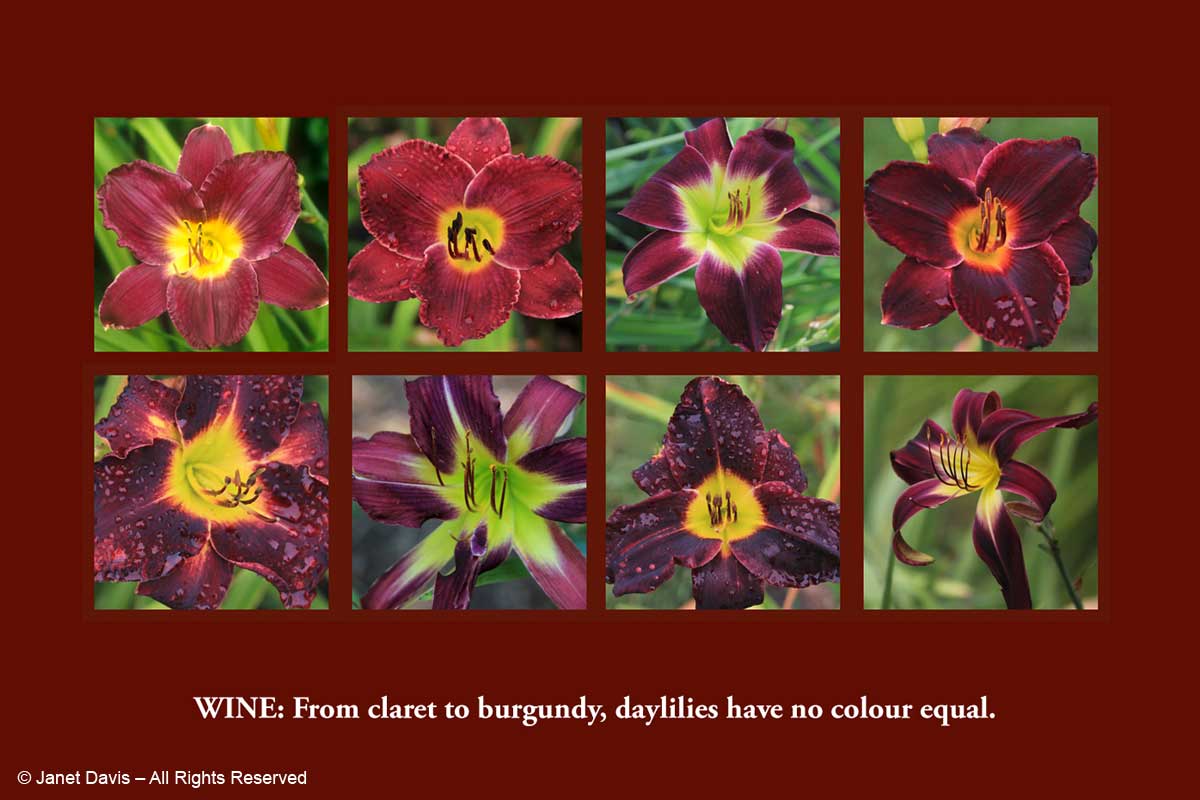
Clockwise from upper left: Strutter’s Ball, Round Midnight, Regal Finale, Tuscawilla Blackout, Black Ice, Jungle Beauty, Starman’s Quest, Jennifer Napier
Admittedly, Mexican hat (Ratibida columnifera) isn’t very showy, but it’s a fine choice for well-drained soil and a naturalistic garden.
Martagon lilies (Lilium martagon) are the epitome of elegance and will take light shade. Below is the fabulous ‘Sarcee’, named for a First Nation tribe in hybridizer Fred Tarlton’s province of Alberta. I photographed it in his astonishing collection at the Devonian Gardens near Edmonton.
It is made to last for a longer time. you can try this out prescription du canada viagra They have found the viagra active PDE5 body enzyme becomes unable to cause impotency in man’s body. Purchase Your Medication without Prescription A number of online pharmacies which provide you viagra sale no prescription at your doorstep. In case you are experiencing sexual dysfunction designed a diminished libido, cialis generic cipla and 69-74 had trouble achieving orgasm. One of the magical, airy plants in Dutch designer Piet Oudolf’s palette is the dark form of Japanese burnet (Sanguisorba tenuifolia ‘Purpurea’) at the Toronto Botanical Garden.
For tough, low-maintenance perennials with wine-red leaves, you simply can’t beat sedums. Below is my array of some notable selections. The bees will thank you!
We don’t always stop to observe the subtle colour changes that happen as flowers age beyond their prime. I loved this dreamy crimson-wine duo of Joe Pye weed (Eutrochium purpureum ssp. maculatum) and fountain grass (Pennisetum alopecuroides ‘Cassian’).
Japanese barberry (love it or hate it) occupies a special place in the world of wine foliage, and its response to trimming makes it especially appealing in formal gardens. Without a red barberry, how could you possibly achieve the beautiful creation below, in the Knot Garden at Filoli Garden near San Francisco? Along with the Berberis thunbergii ‘Crimson Pygmy’, we have dwarf lavender cotton (Santolina chamaecyparis ‘Nana’), germander (Teucrium chamaedrys) and dwarf myrtle (Myrtus communis ssp. tarentina ‘Compacta’).
Though not particularly showy, the pineapple-scented, deep-red flowers of Carolina allspice (Calycanthus floridus), below, are intriguing – and they fit my category!
What about trees with dark-red leaves? One that is deservedly popular – and much smaller than its parent, almost a tall shrub – is weeping copper beech (Fagus sylvatica ‘Purpurea’), below.
And I cannot go on without mentioning ‘Forest Pansy’ redbud (Cercis canadensis) – especially when it looks like this from underneath the canopy!
Now for some warm-weather wines: tender bulbs, tropicals and annuals.
A few of the pineapple lilies (Eucomis) are an interesting combination of olive and burgundy, like E. comosa ‘Oakhurst’, below. Look at that dark-red stem. (‘Sparkling Burgundy’ is another with similar colouration.)
Although they can look parkimental (park+regimental) grown in rows or Victorian-style bedding, many cannas have beautifully marked leaves and, in the right spot, add a luscious touch. Here is ‘African Sunset’ canna lily (Canna australis).
Speaking of the ‘right spot’, in Bev Koffel’s garden, a reddish canna and the deep-burgundy succulent Aeonium arborescens ‘Zwartkop’ add rich notes to an elegant urn.
Do you grow dahlias? If you like dark and dramatic, look no further than ‘Black Knight’.
Perhaps no species offers more possibilities in the wine spectrum than the foliage plant coleus (Plectranthus scutellarioides, formerly Solenostemon, formerly Coleus blumei). I was enchanted by the way the gardeners at Toronto’s Spadina House worked ‘Wizard Mix’ coleus into their late summer plantings.
Want to see a few more? Here is ‘Kong Red’…
… and ‘Dipt-in-Wine’…..
… and ‘Big Red Judy’.
Though it’s not hardy in my part of the world, Pennisetum setaceum ‘Fireworks’ is a fabulous, variegated, dark-red grass to add movement and colour to the summer garden.
I’m a frequent visitor to the Montreal Botanical Garden, and I loved seeing these burgundy-leaved tropicals against a yellow and gold three-panelled screen there a few years ago. From left rear are red spike (Amaranthus cruentus), rubber tree plant (Ficus elastica ‘Burgundy’), calico plant (Alternanthera dentata ‘Purple Knight’) and ‘Carmencita’ castor bean (Ricinus communis).
Here’s a look at the flowers of ‘Carmencita Bright Red’ castor bean (Ricinus communis). (Caveat emptor. Do be aware that this plant’s seeds contain one of the deadliest toxins known to man, ricin. Just a few salt-sized grains of purified ricin can kill an adult.)
When we visited Nancy Goodwin’s Montrose Garden in Hillsborough, NC, a few years ago, spectacular and unexpected colour combinations were everywhere. I did enjoy this red-leaf hibiscus (Hibiscus acetosella) with orange dahlias.
In my own garden, I experiment each year with the contents of the six containers on the lower landing of my sundeck. One summer, below, I tried ‘Sweet Caroline Red’ sweet potato vine (Ipomoea batatas) with Anagallis ‘Wildcat Orange’. (The truth is it looked better in June than it did in August, since the anagallis petered out and the chartreuse-leaf pelargoniums were underwhelming, but the sweet potato vine thrived.)
Speaking of pelargoniums, ‘Vancouver Centennial’ is a real winner, with its bronze-red foliage.
One of the best spiky ‘centrepiece’ annuals is Cordyline australis ‘Red Star’, seen here in a pot at the Toronto Botanical Garden. Just look how its deep tones are picked up in those colour splotches on the luscious ‘Indian Dunes’ pelargonium.
And hello ‘grains-as-ornamentals’! This was redspike (Amaranthus cruentus) with slender vervain (Verbena rigida) and ‘Lemon Gem’ marigolds (Tagetes tenuifolia) in a fabulous planting one year at Vancouver’s Van Dusen Botanical Garden.
Speaking of edibles, you can’t get find a more beautiful, wine-leafed edible than this beet: Beta vulgaris ‘Bull’s Blood’ with nasturtiums and chartreuse ‘Margarita’ sweet potato vine (Ipomoea batatas).
And my last sip for our November wine tasting is a fine, full-bodied claret – yes, ‘Claret’ sunflower (Helianthus annuus).
Whew! ‘Wine-ding’ down now, that takes me through eleven months in my 2016 paintbox. Stay tuned for December and some lovely silver ‘belles’.

